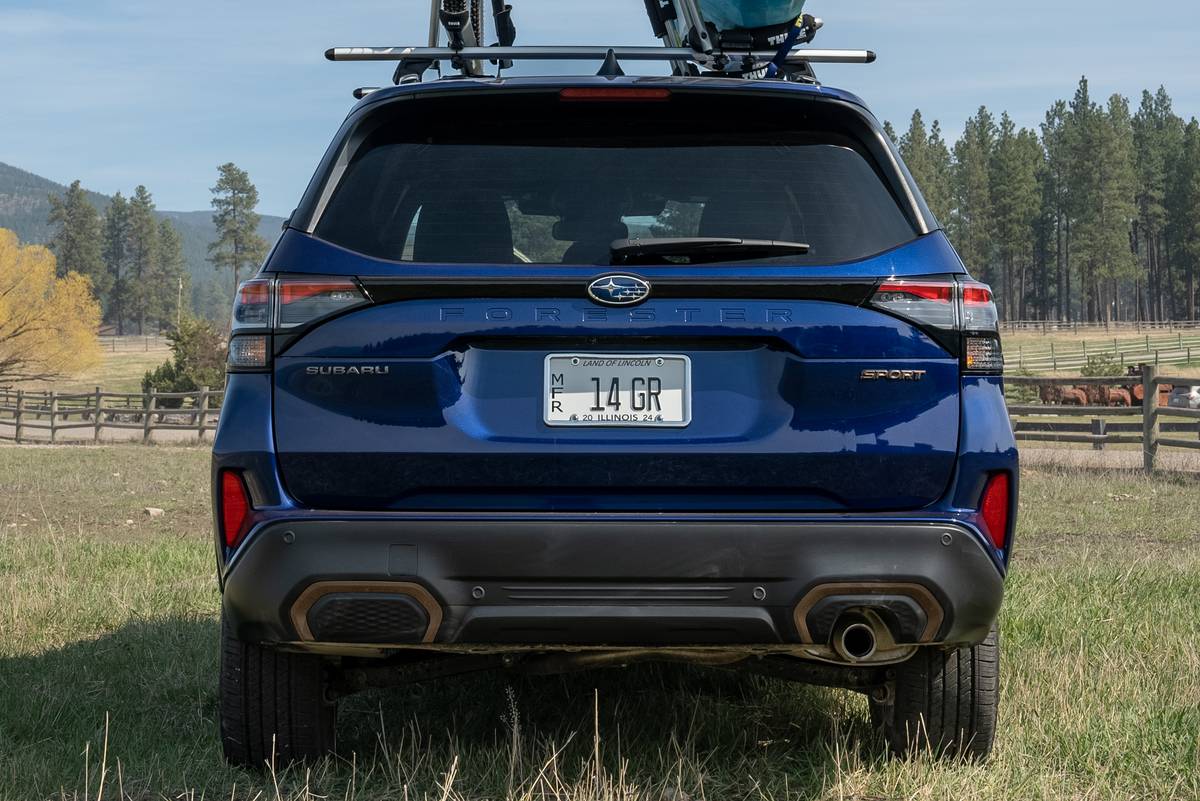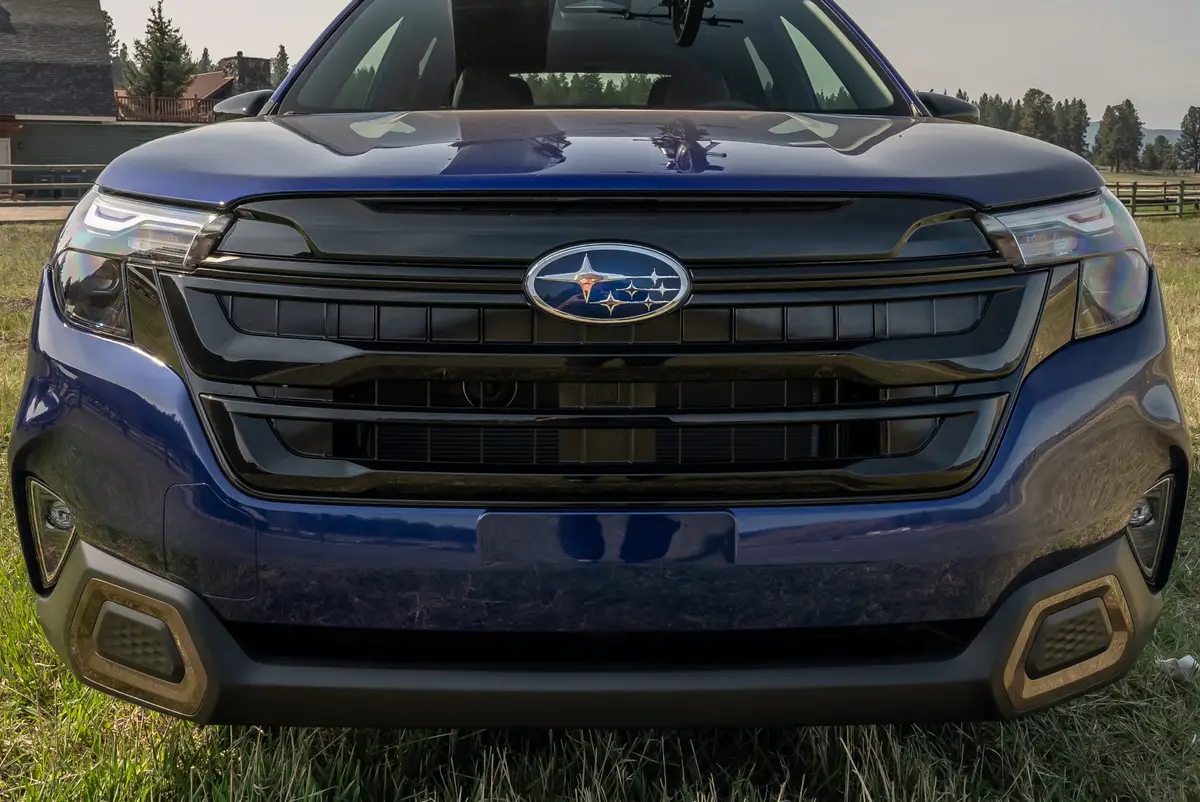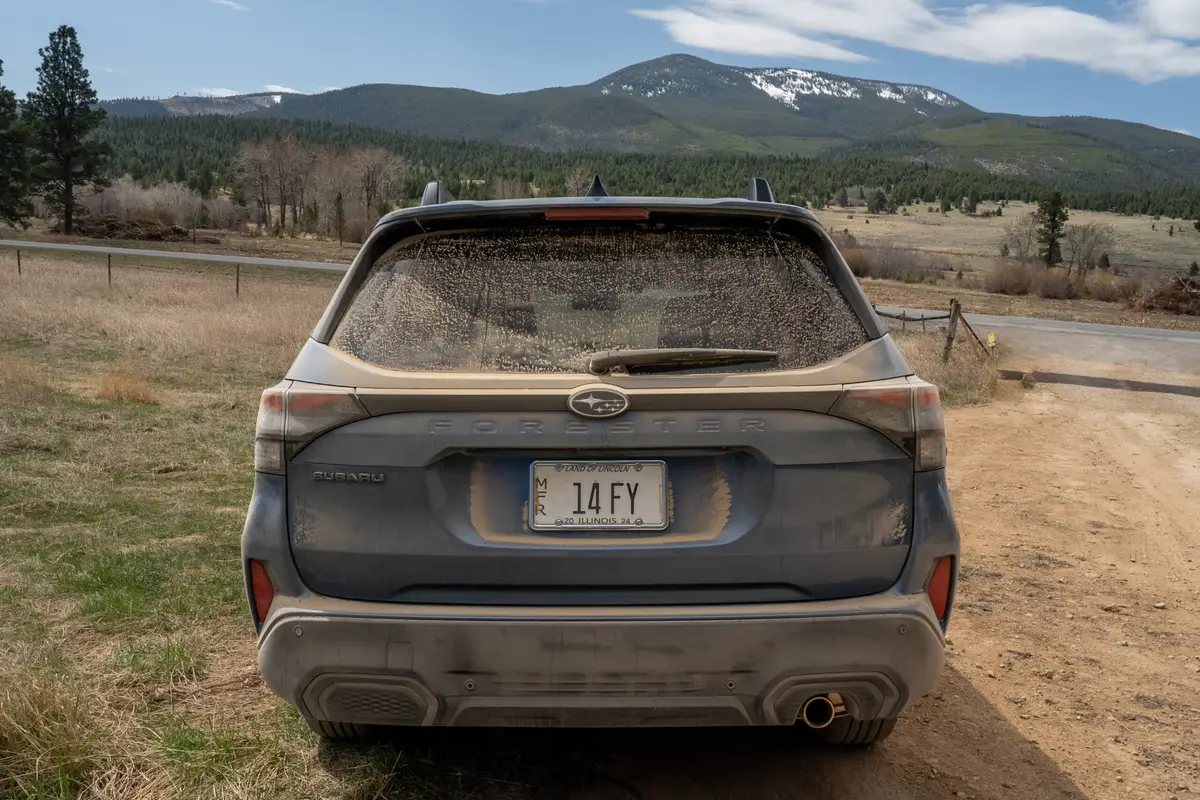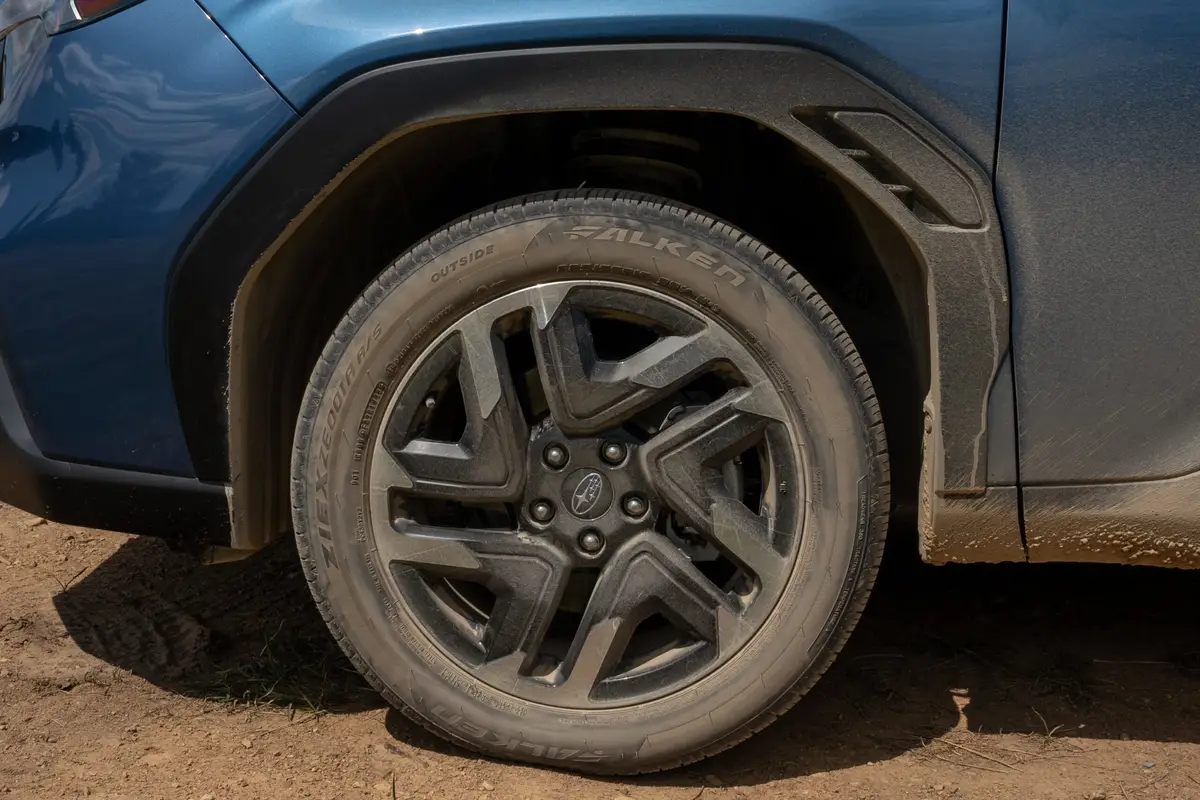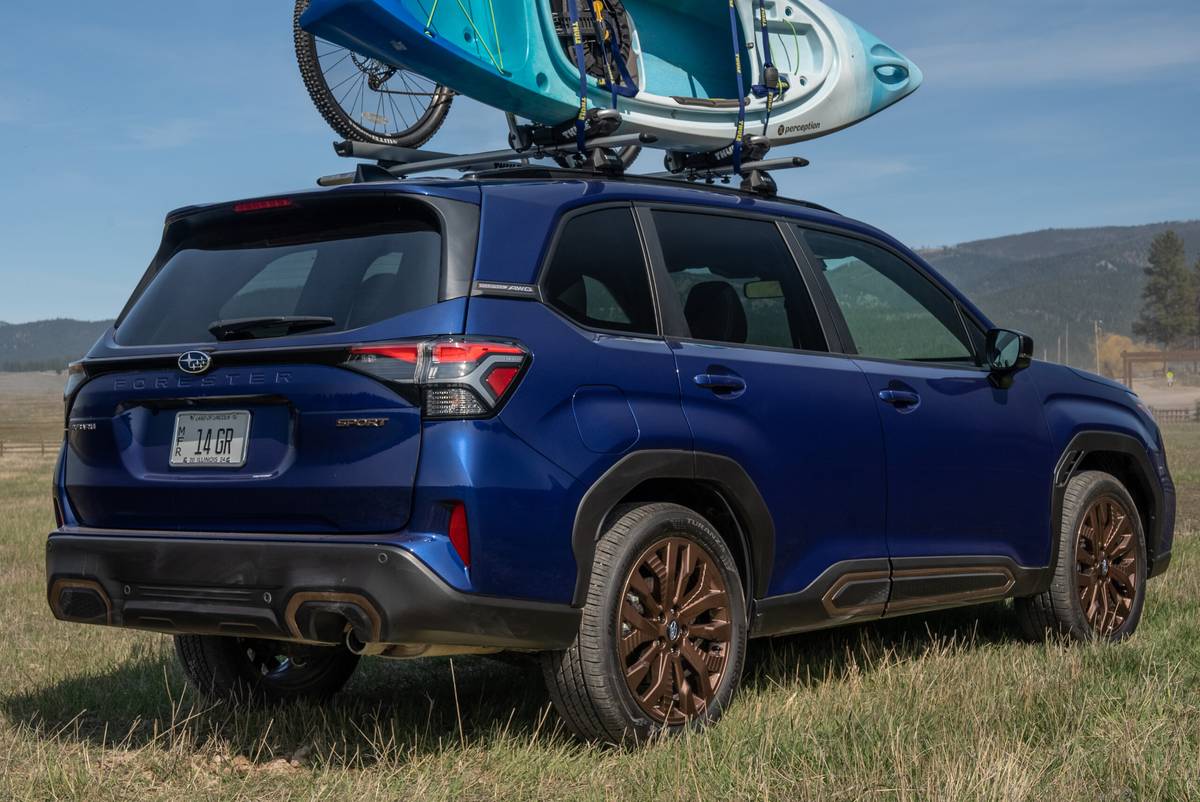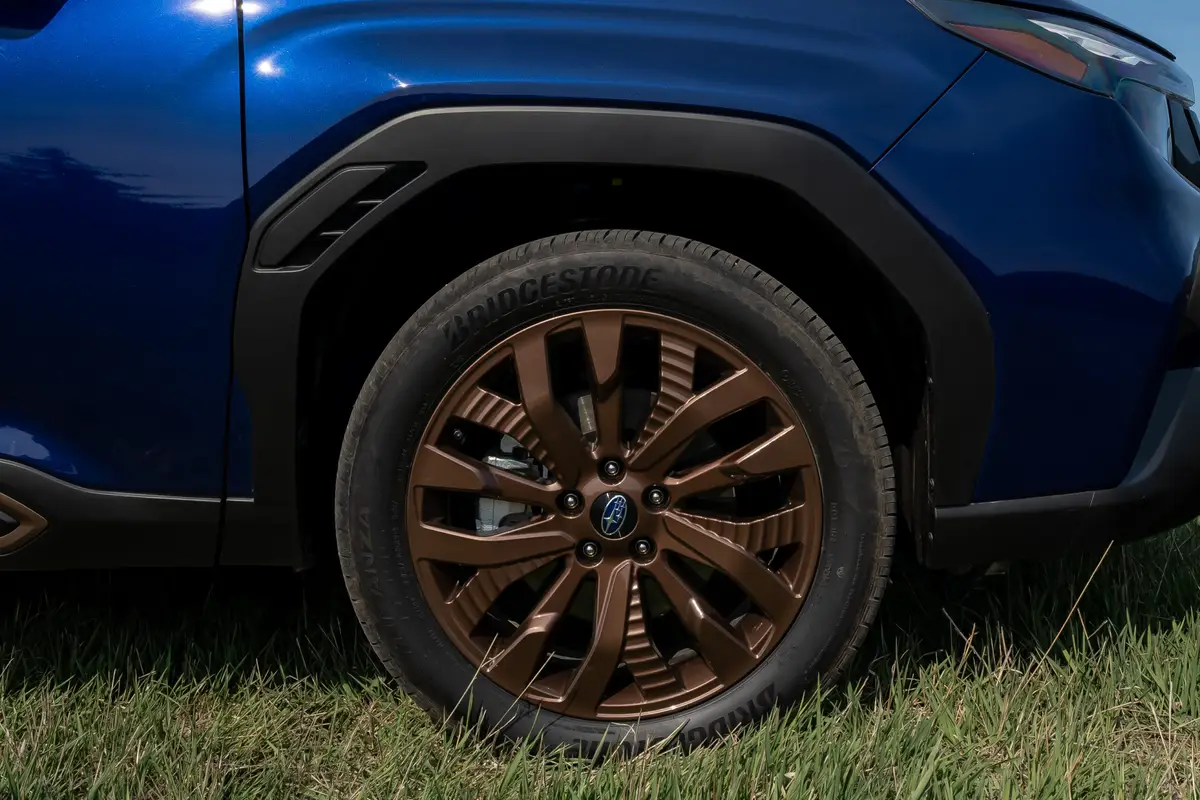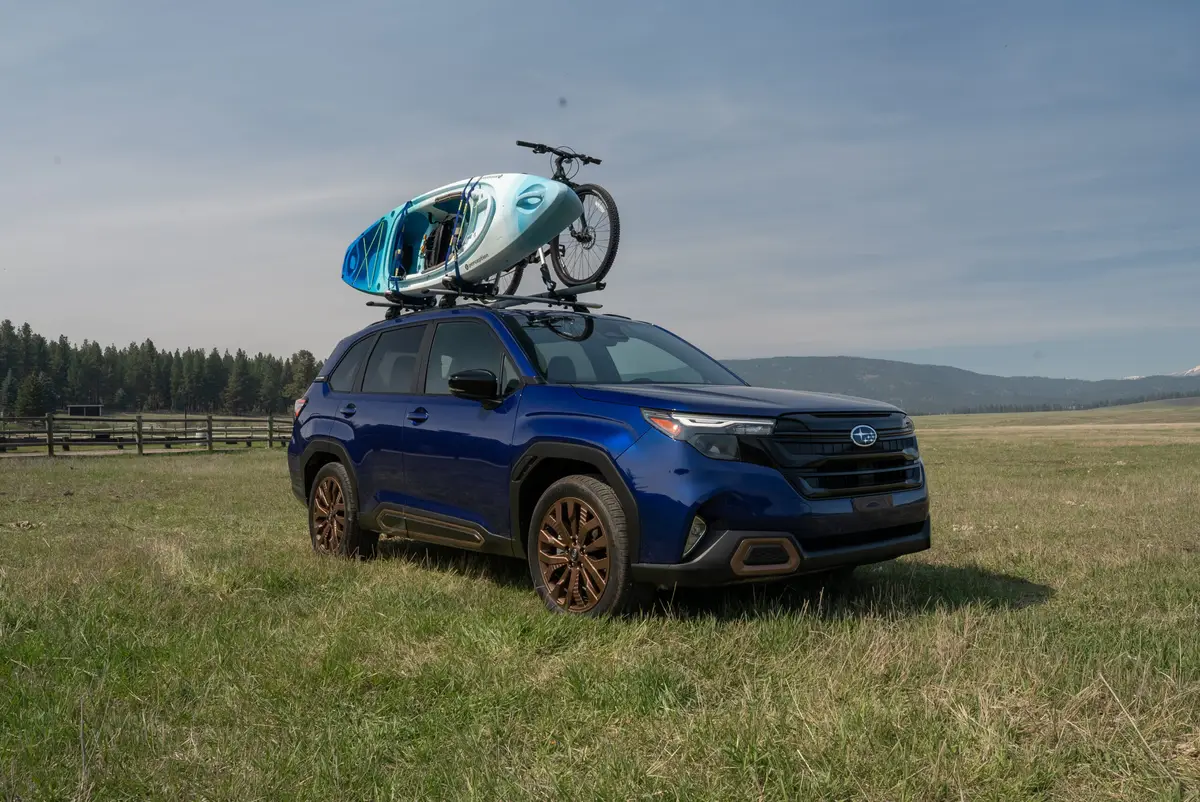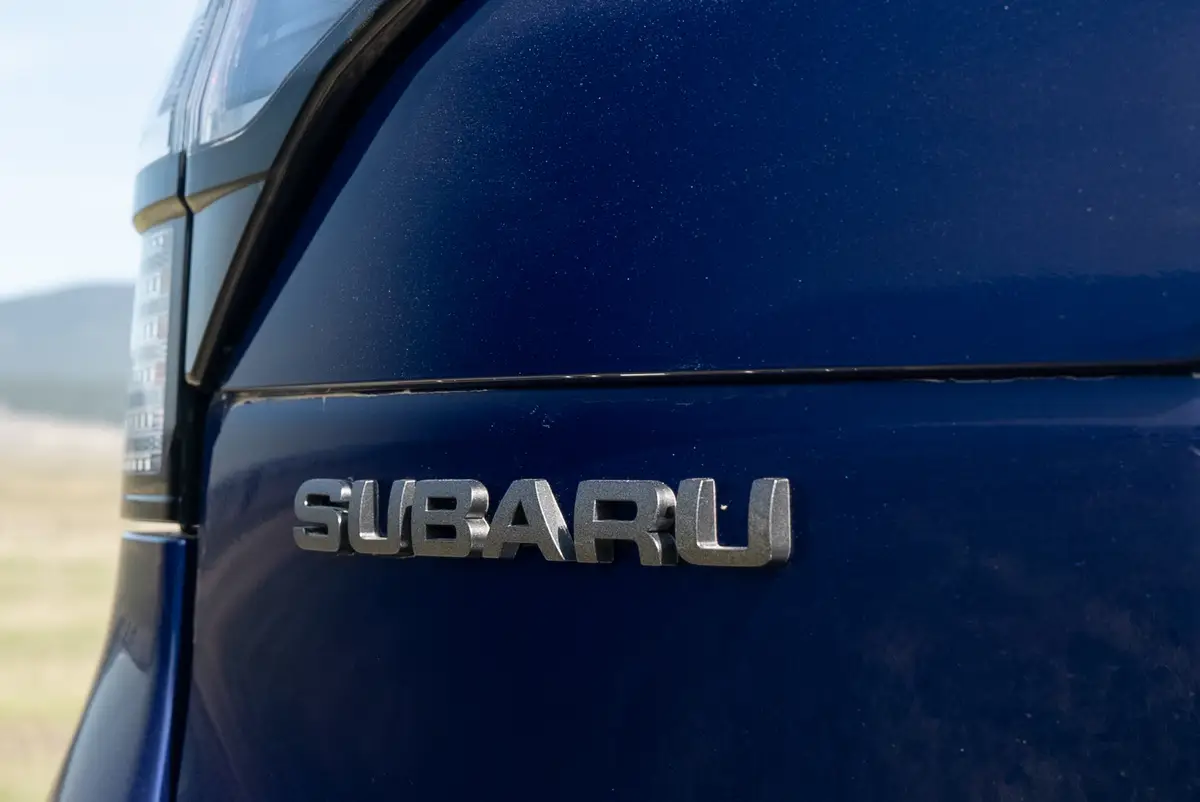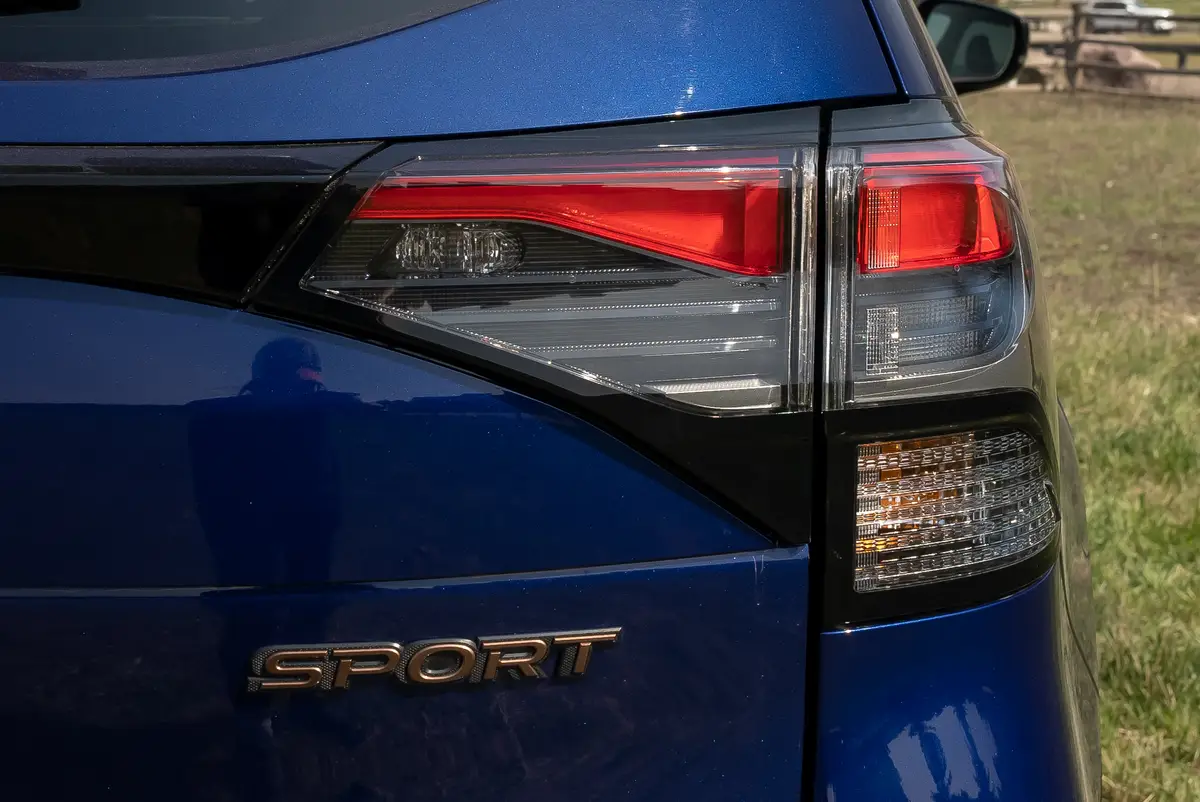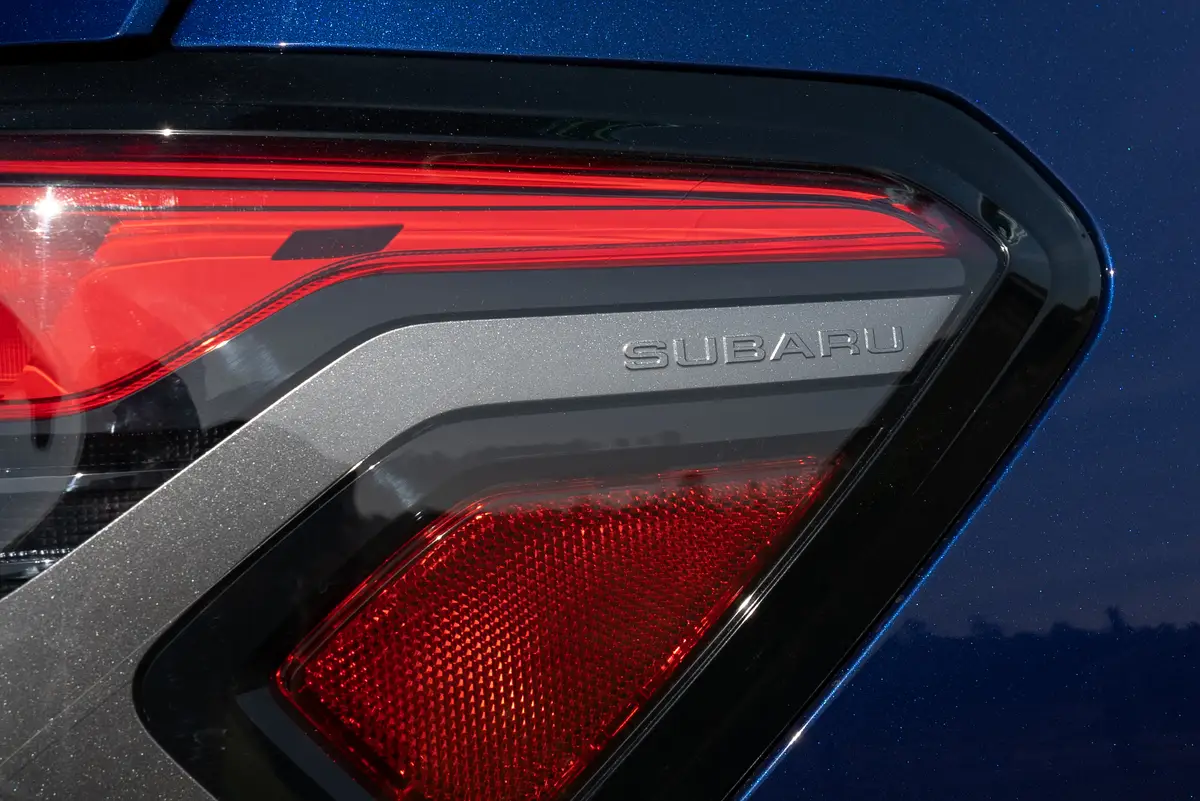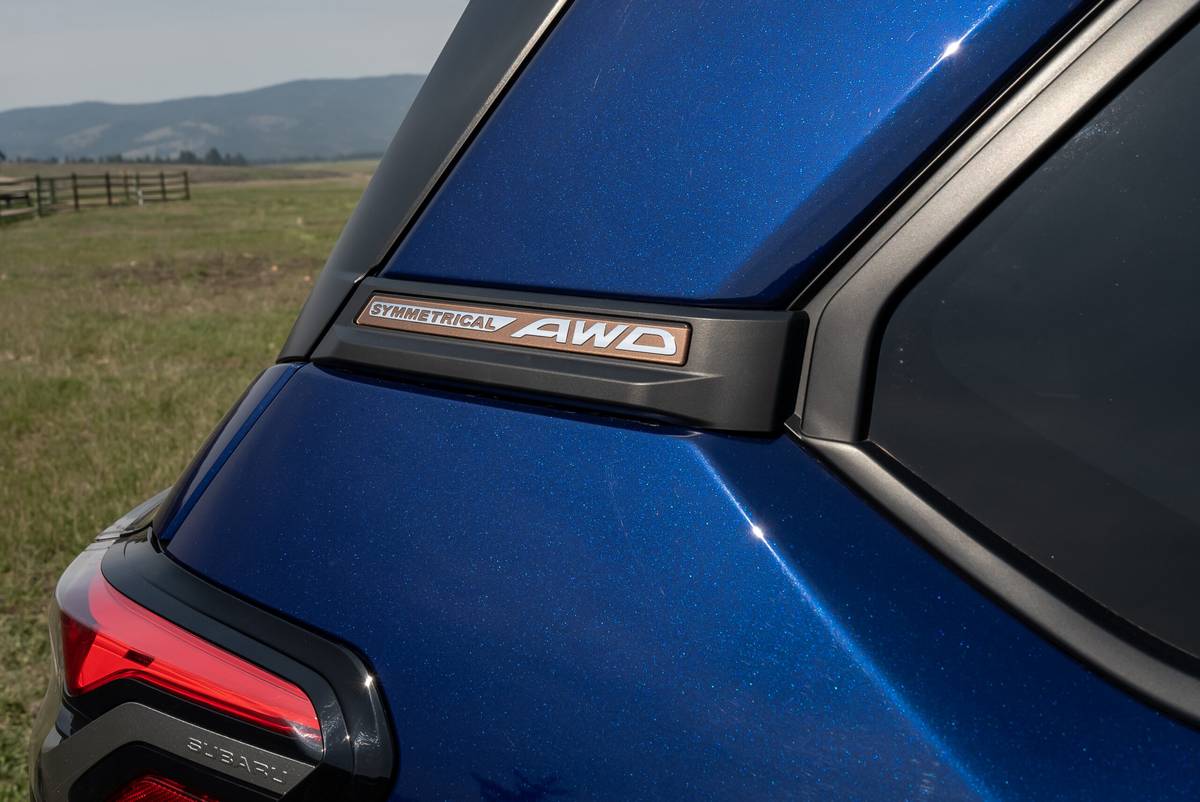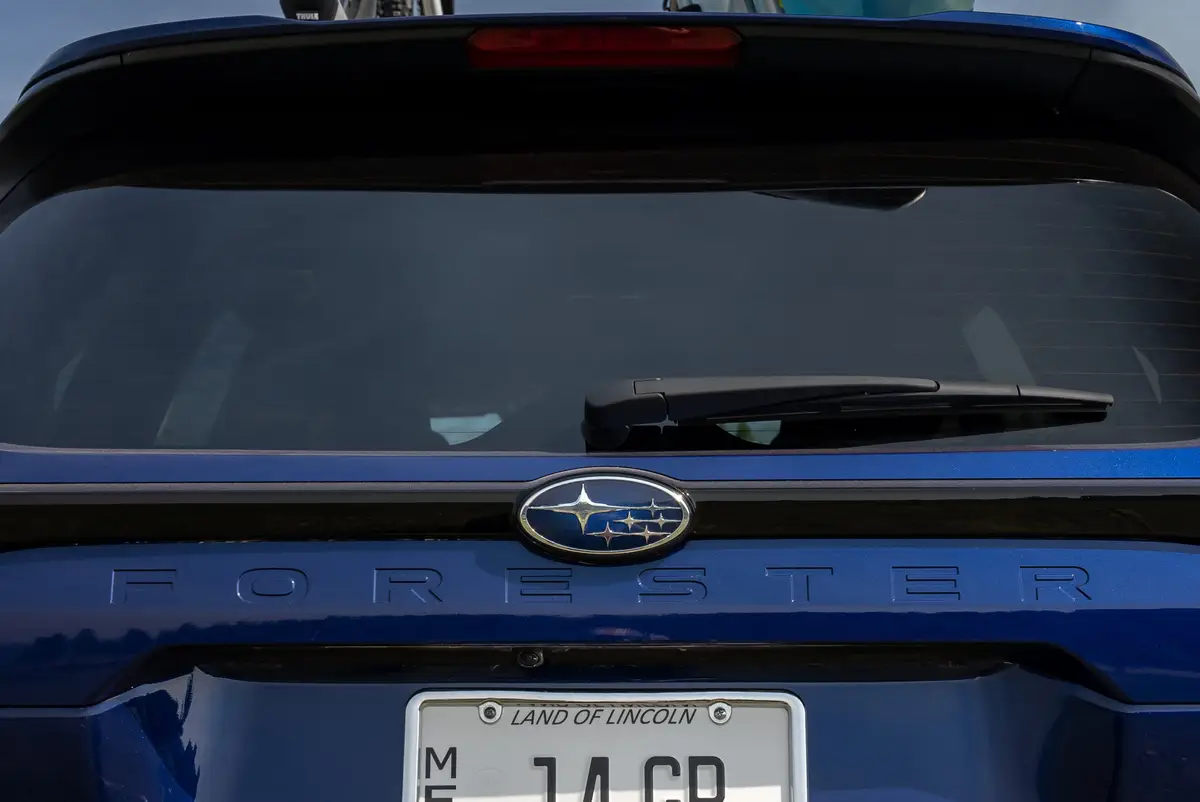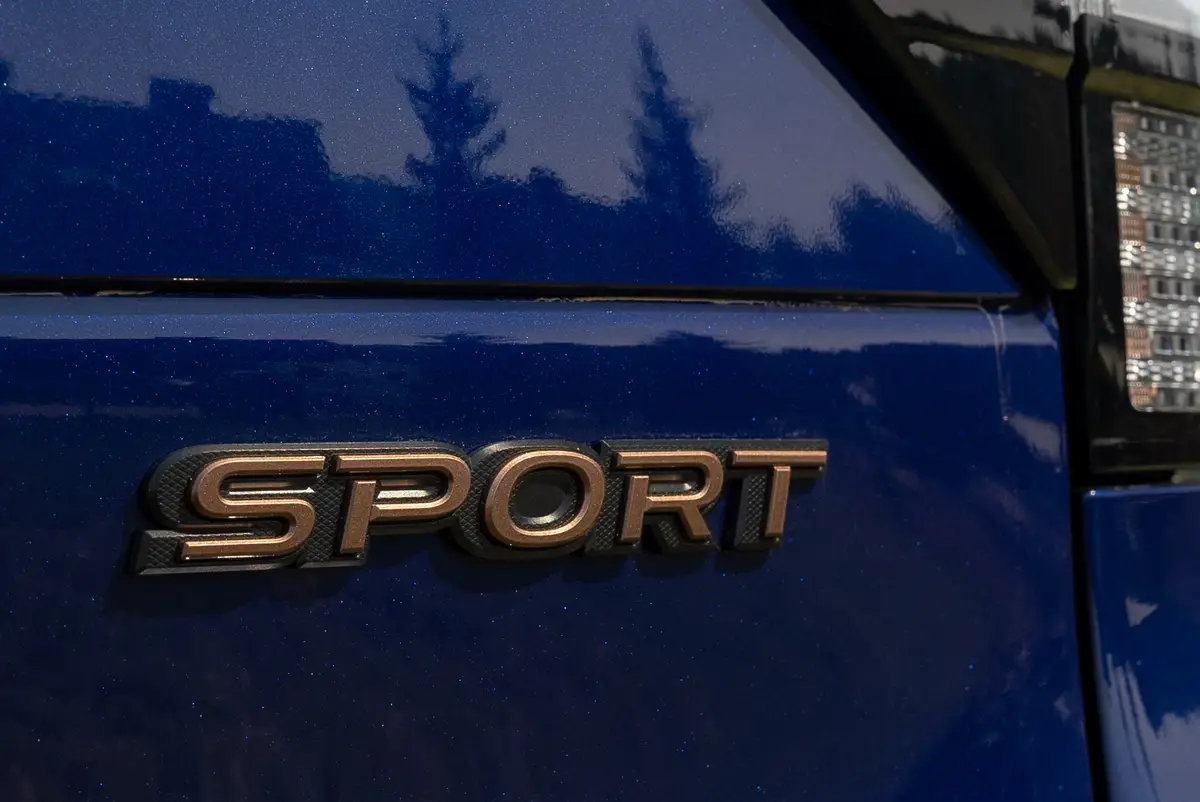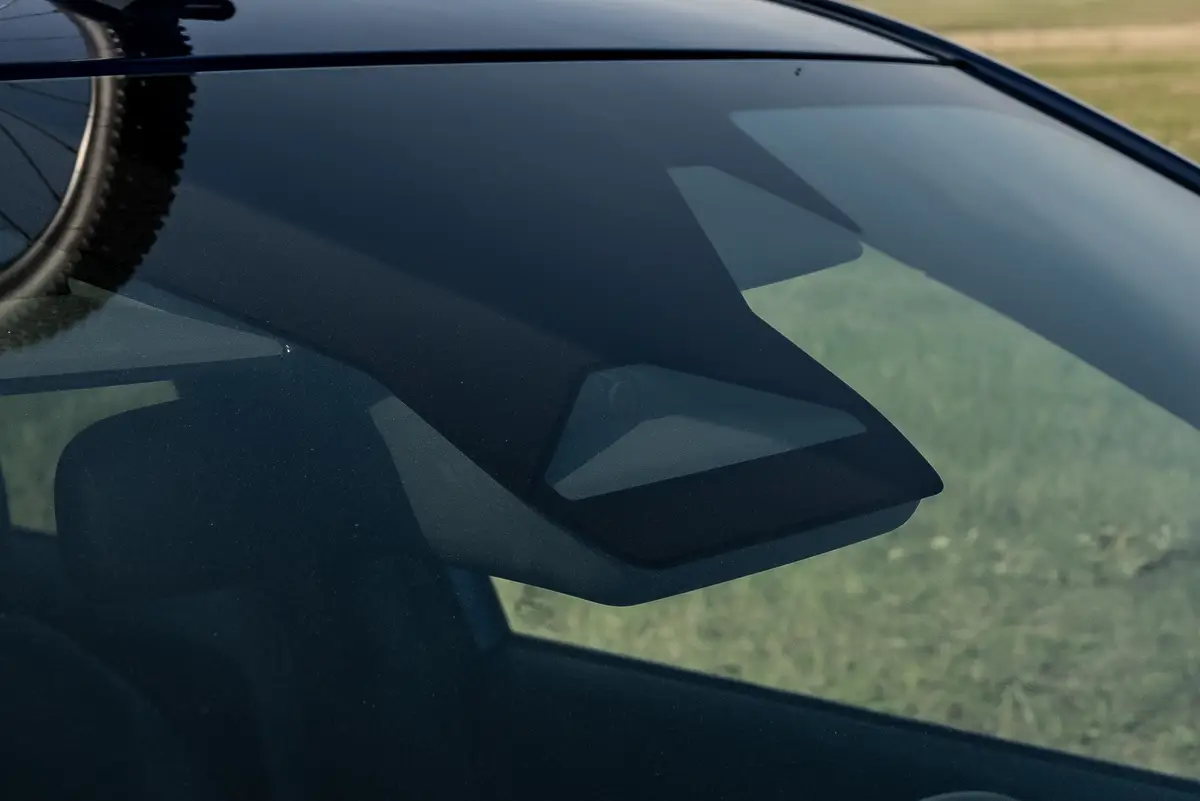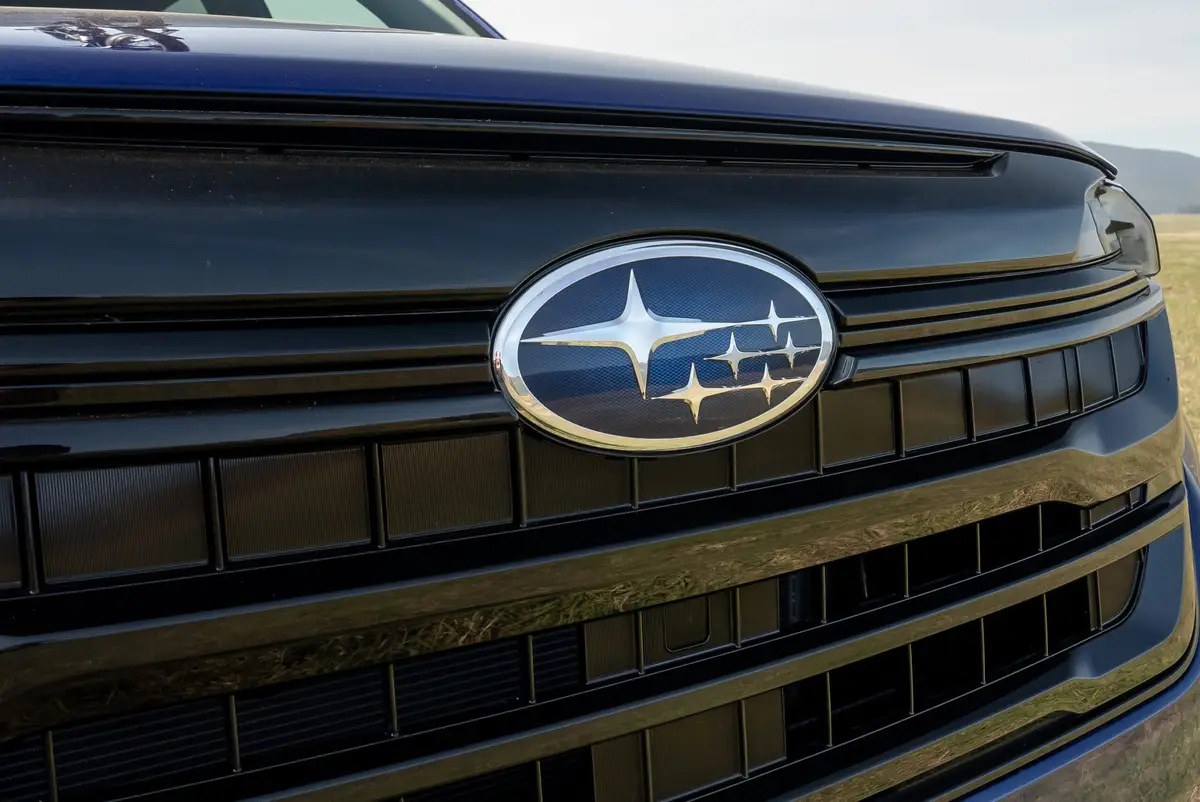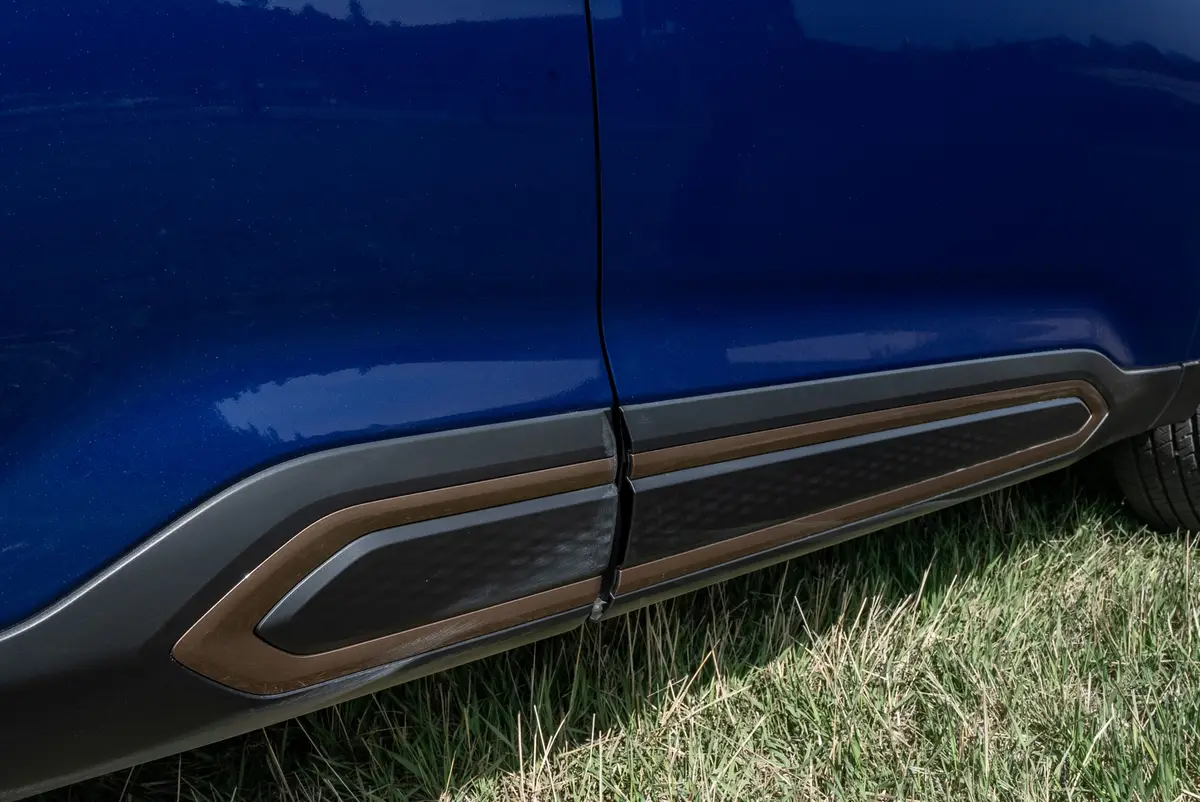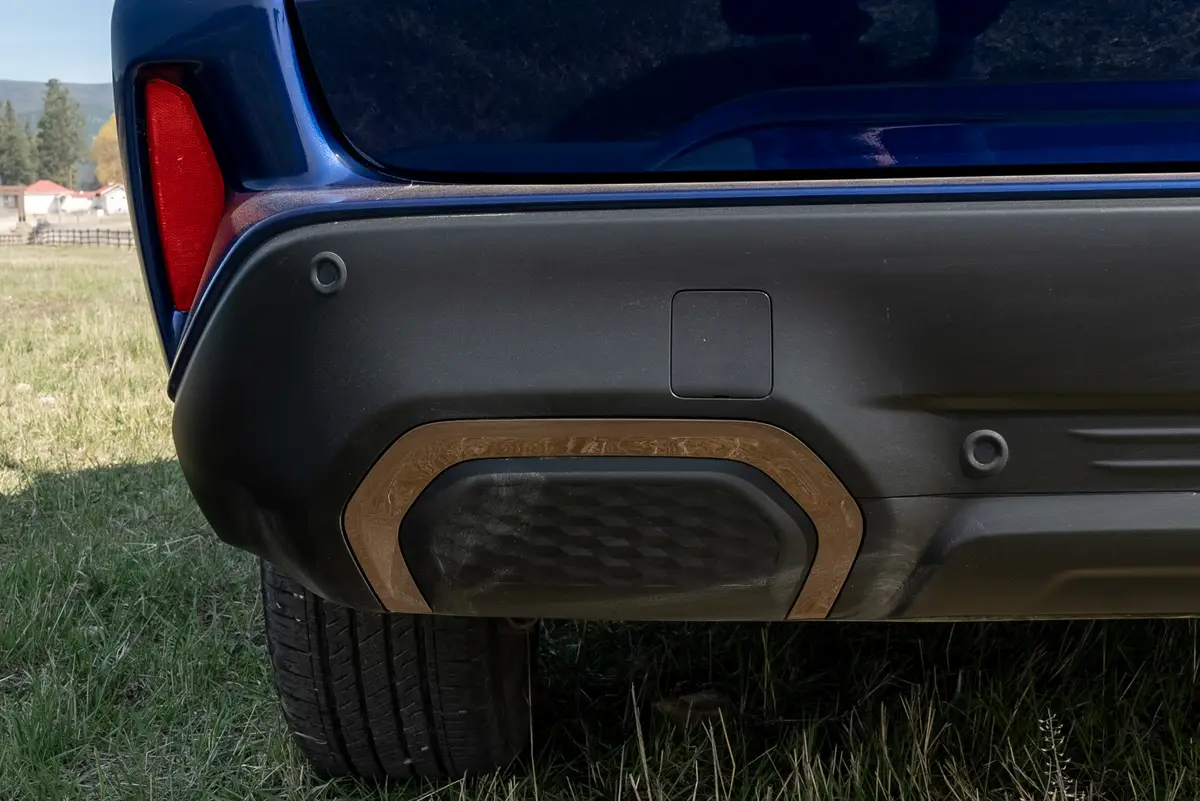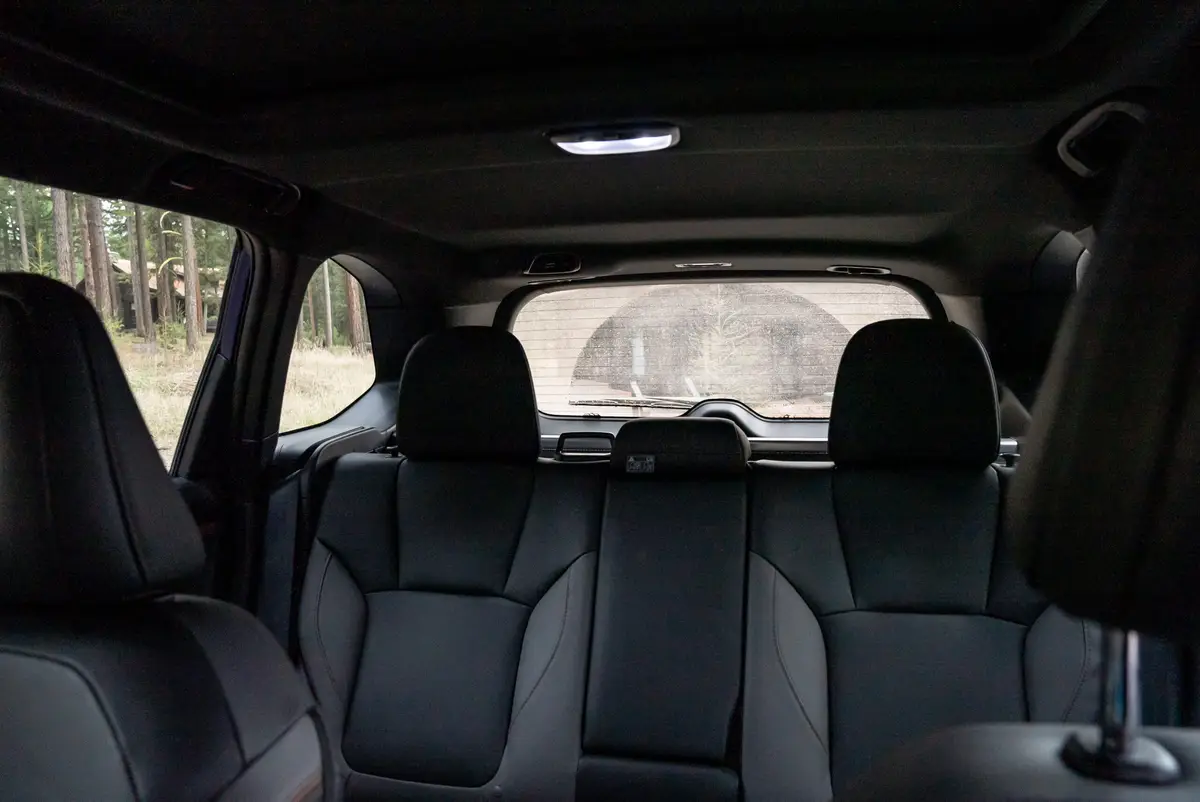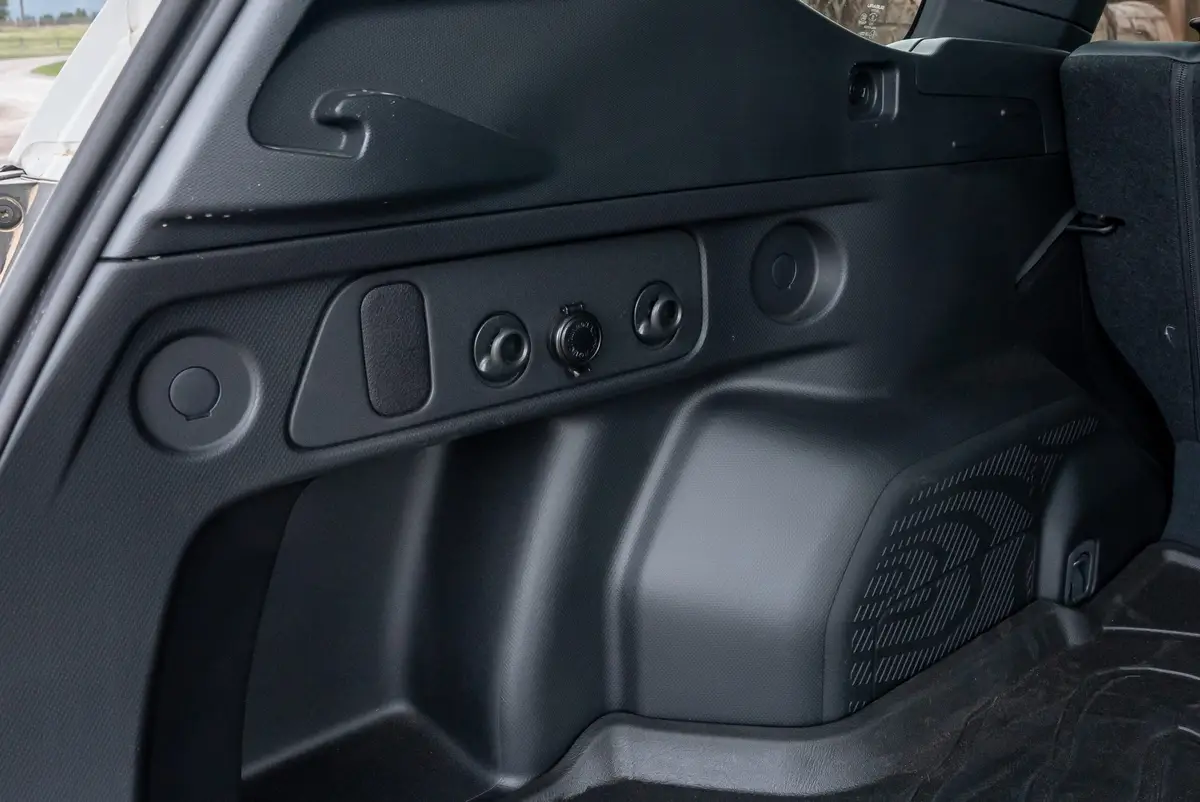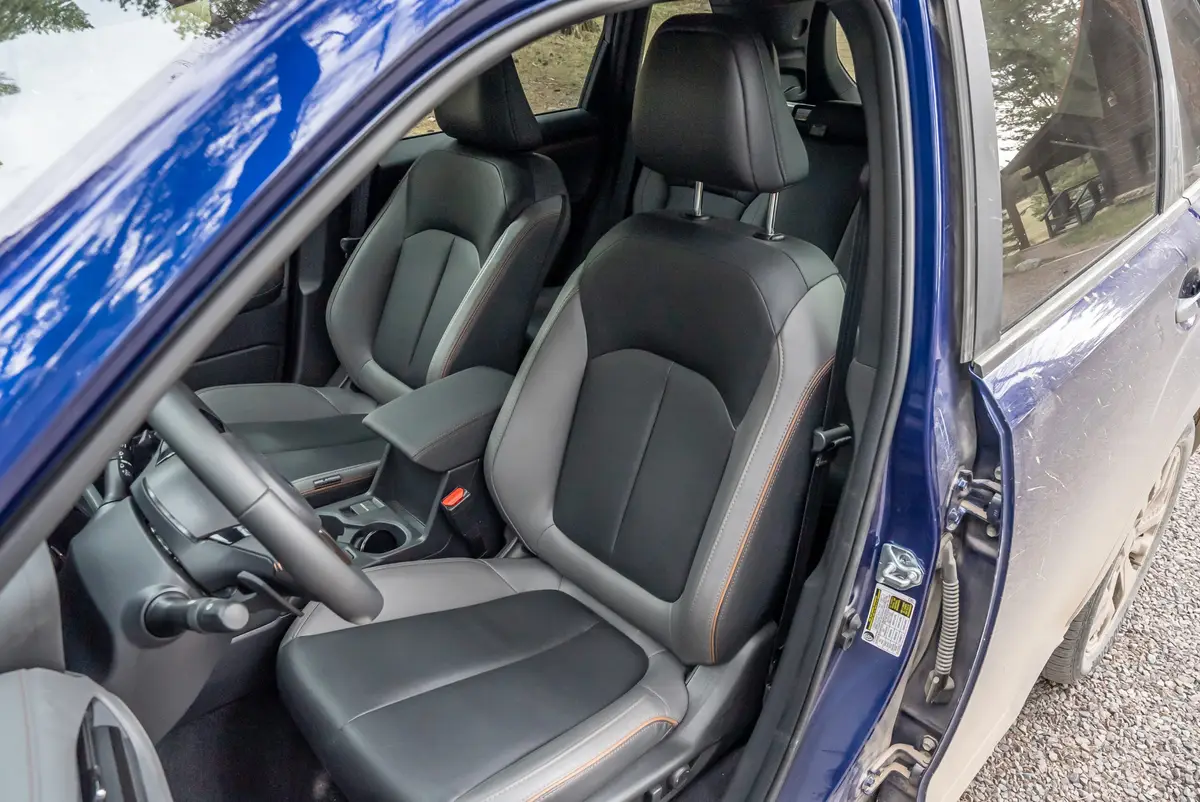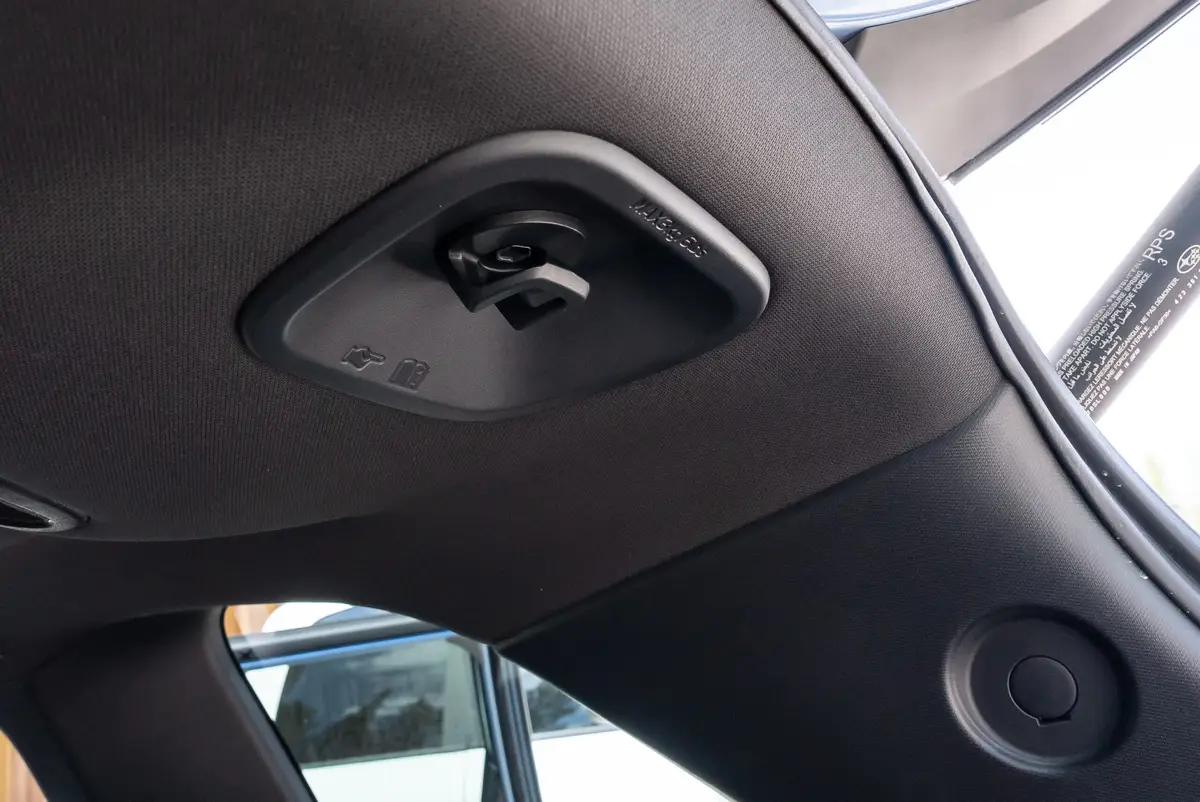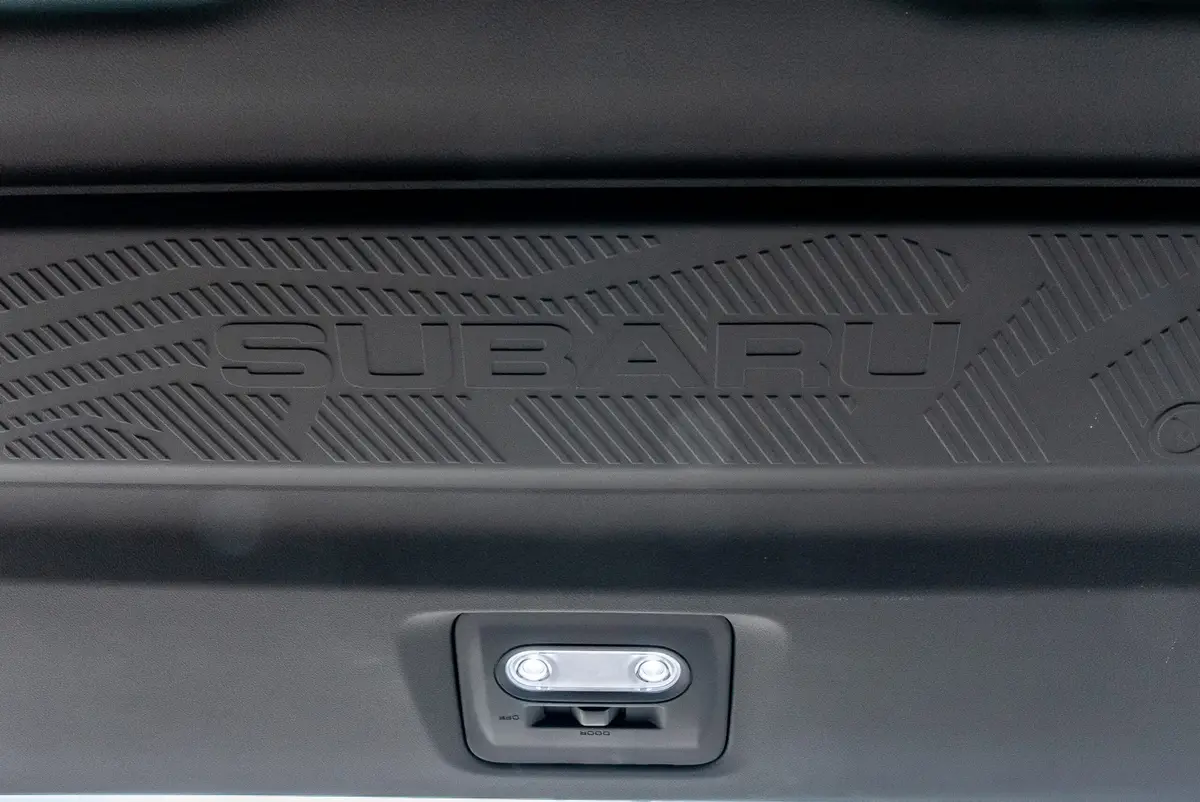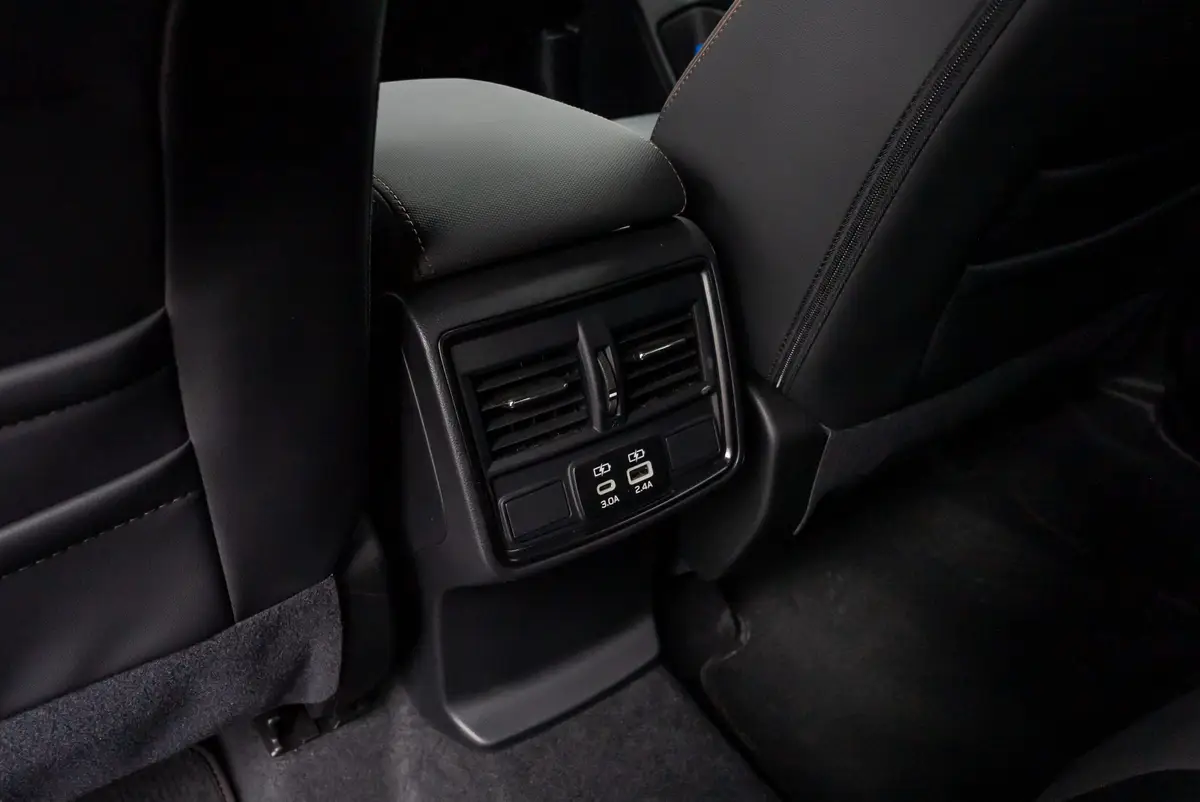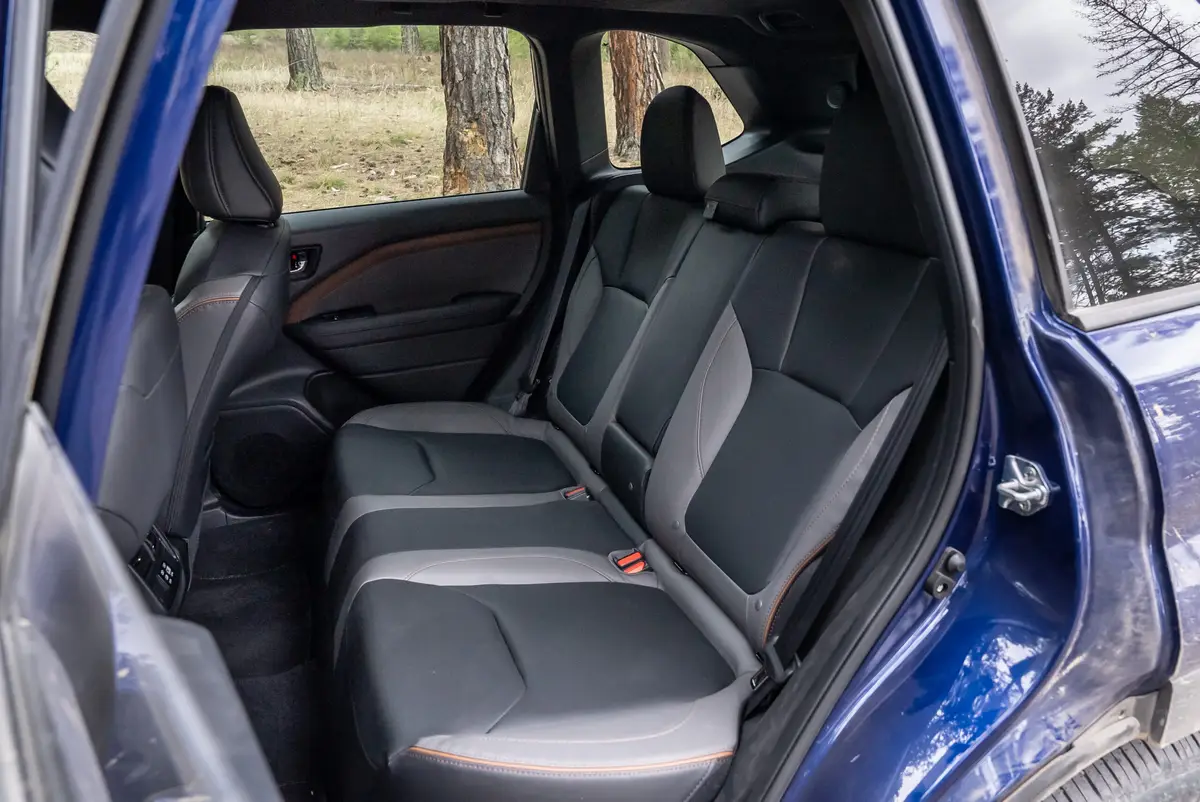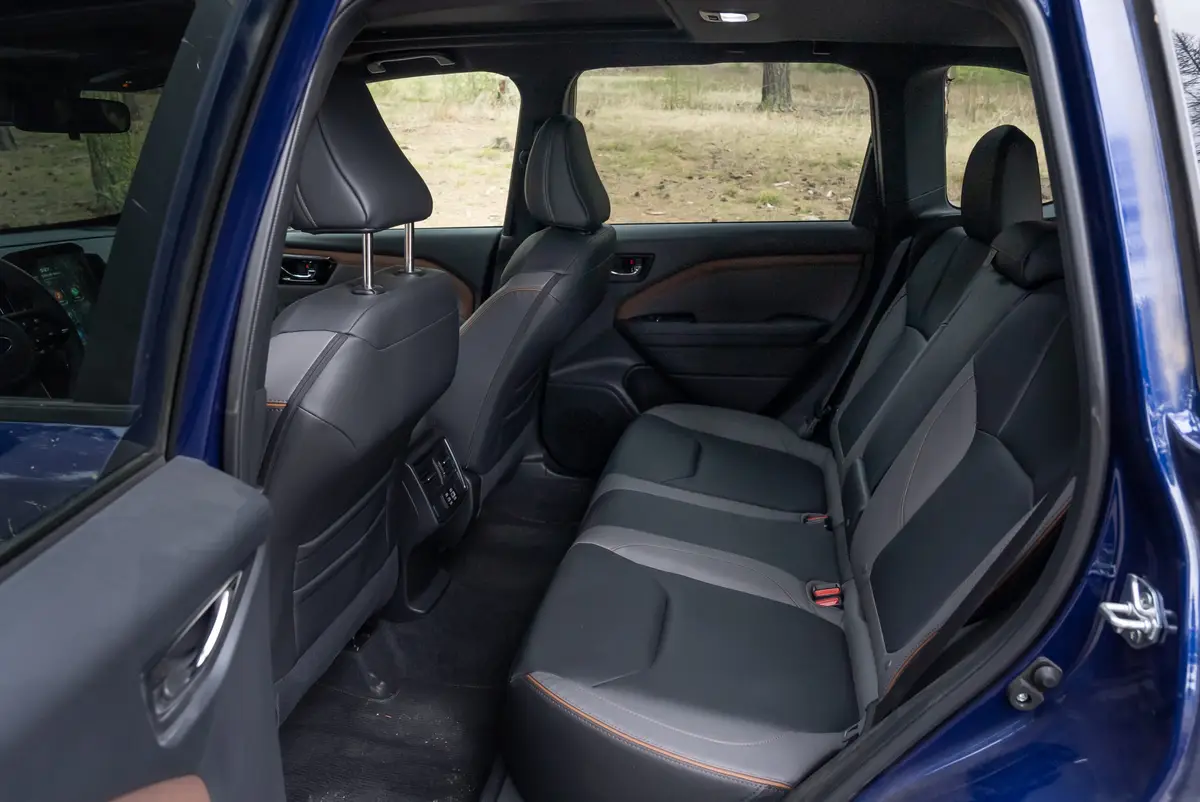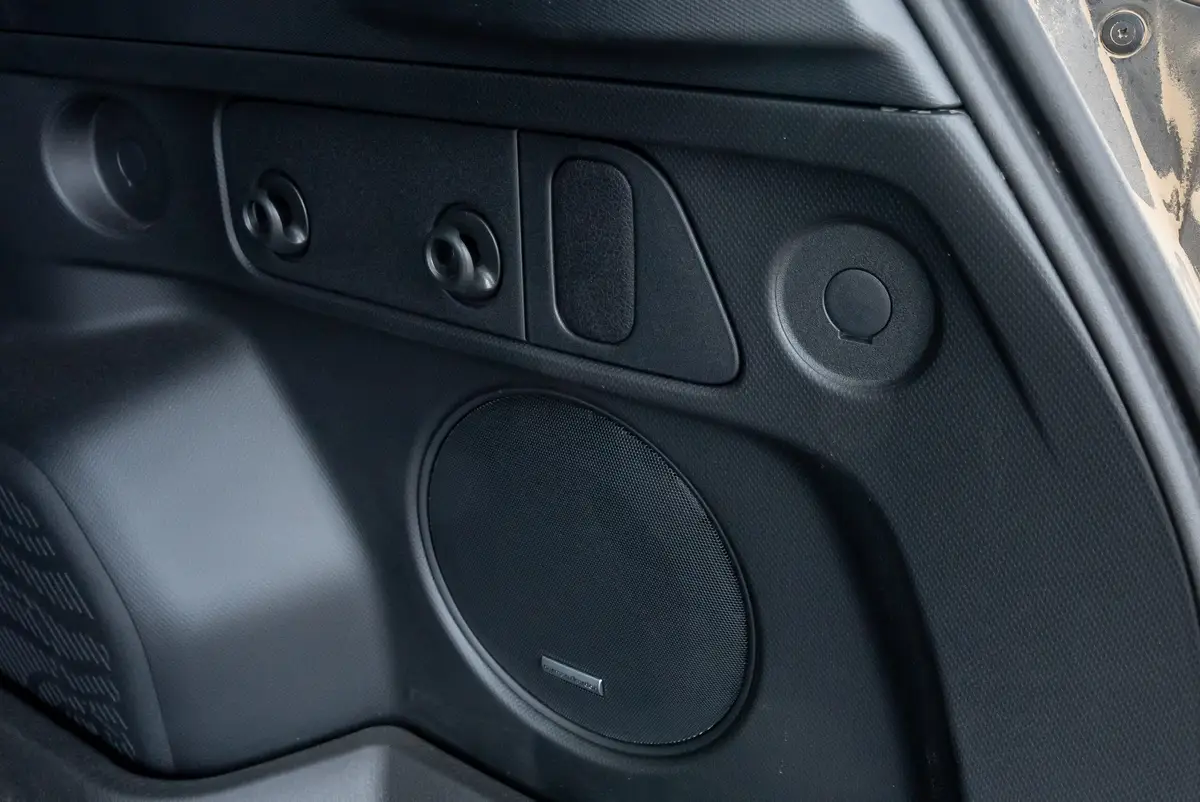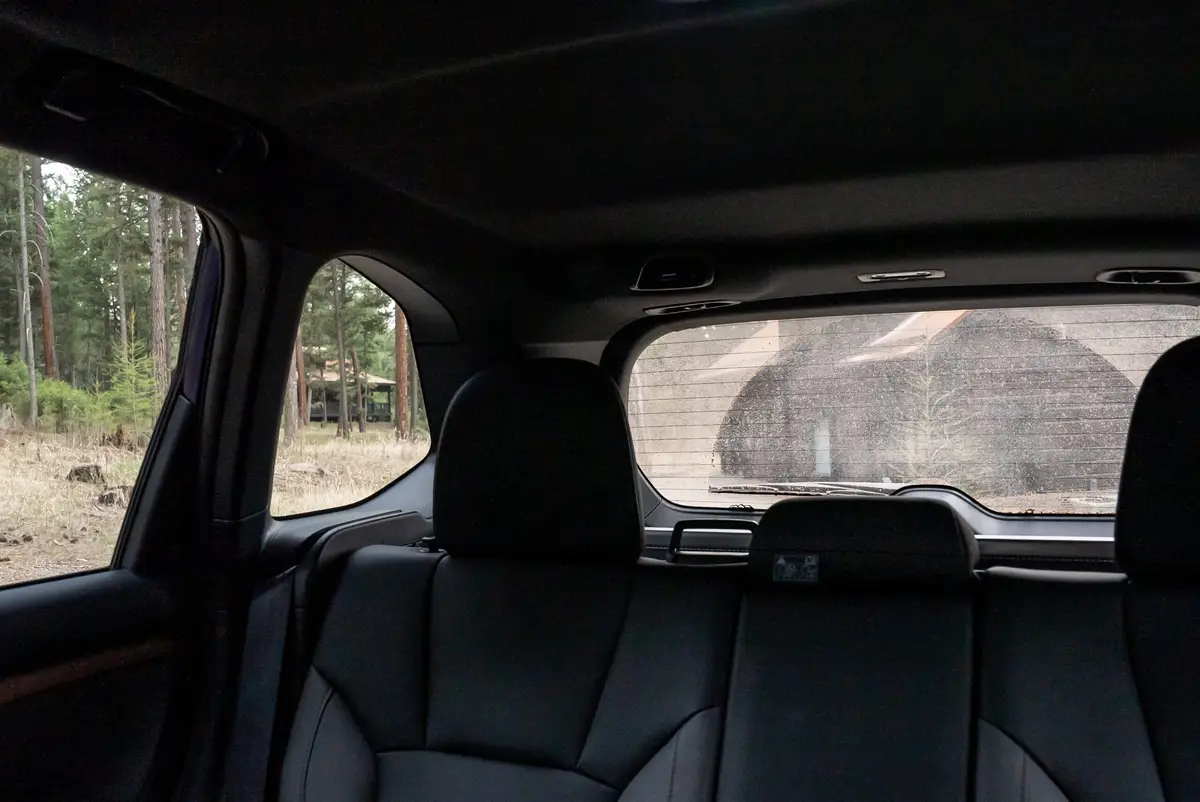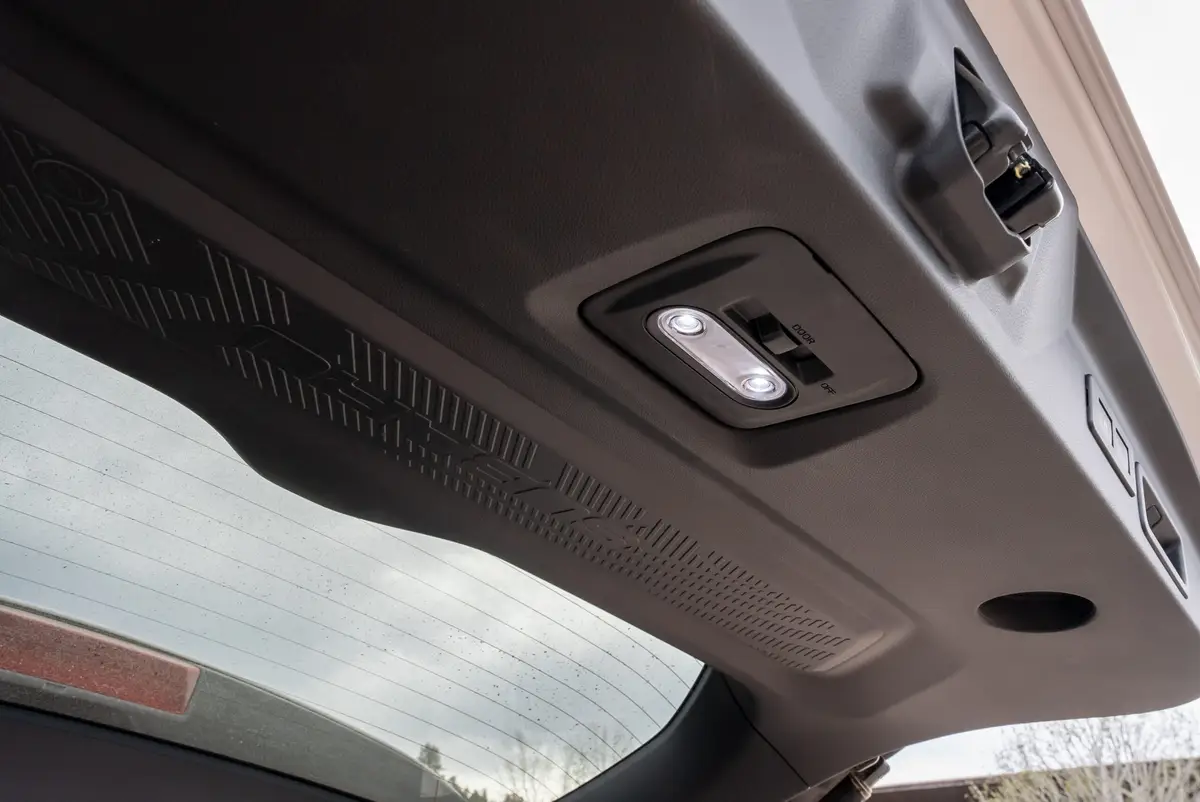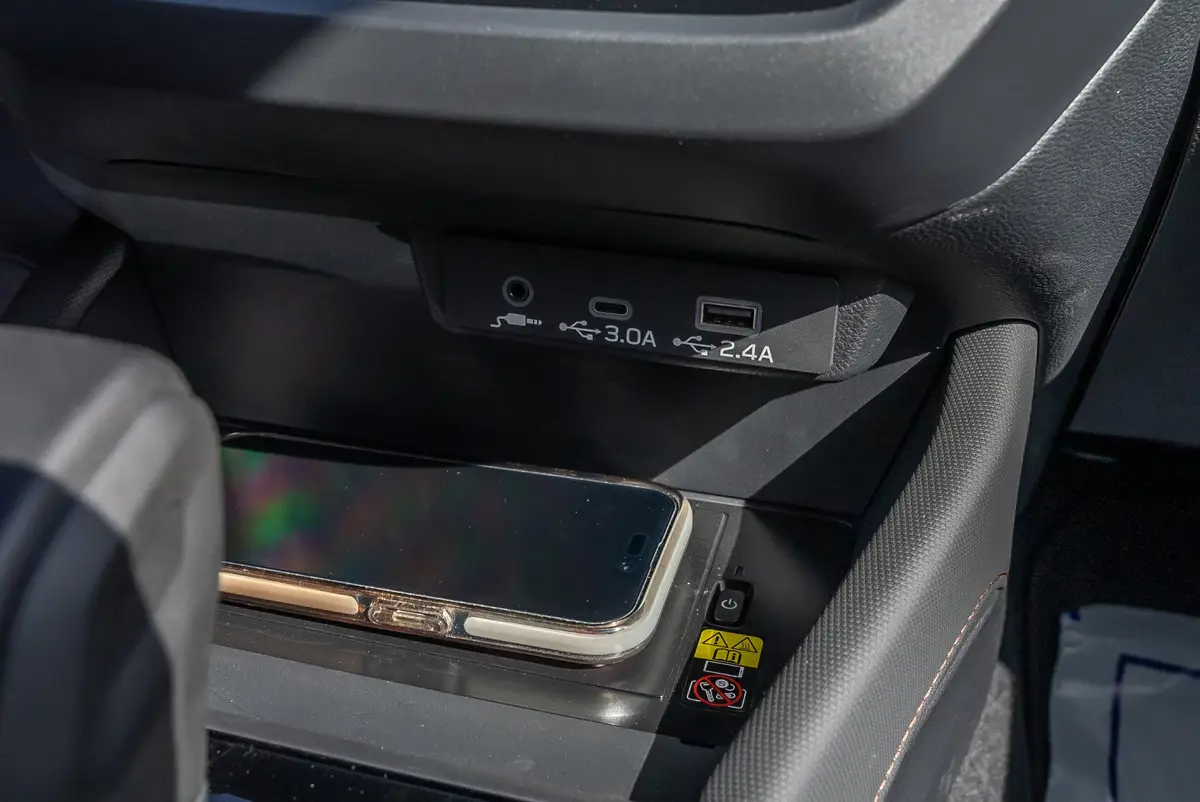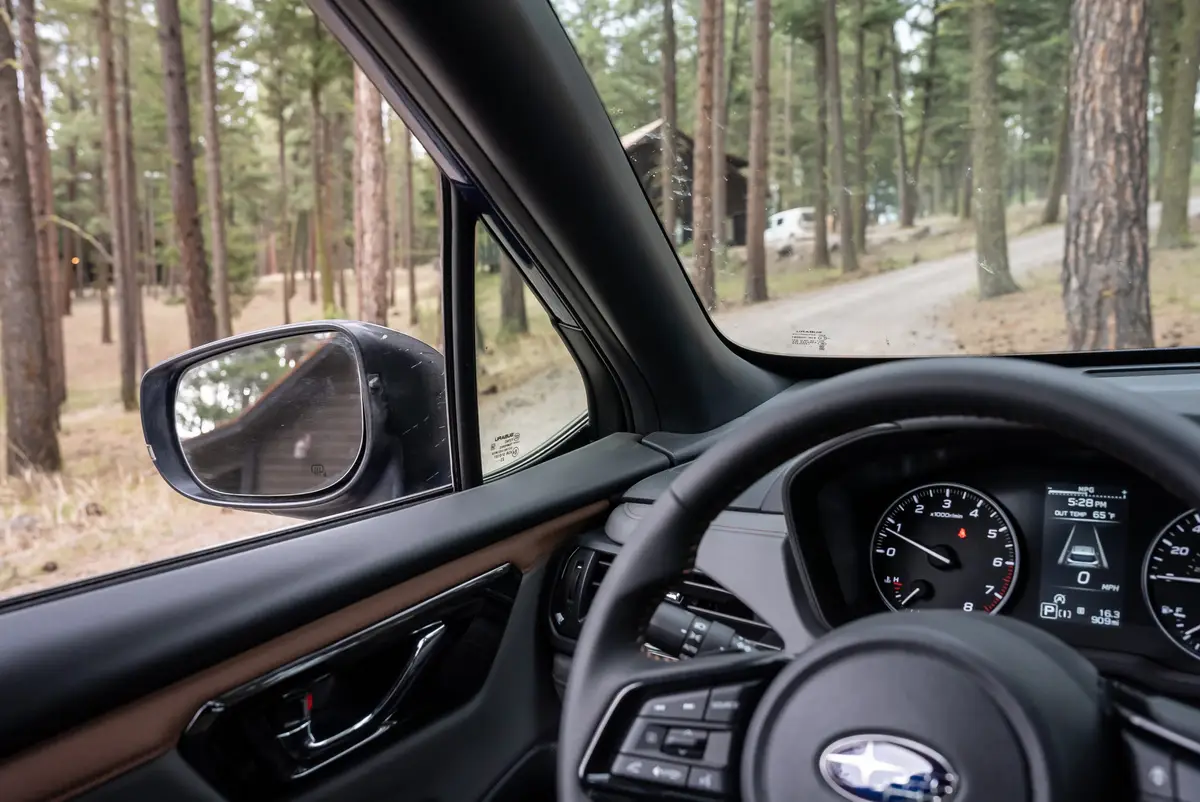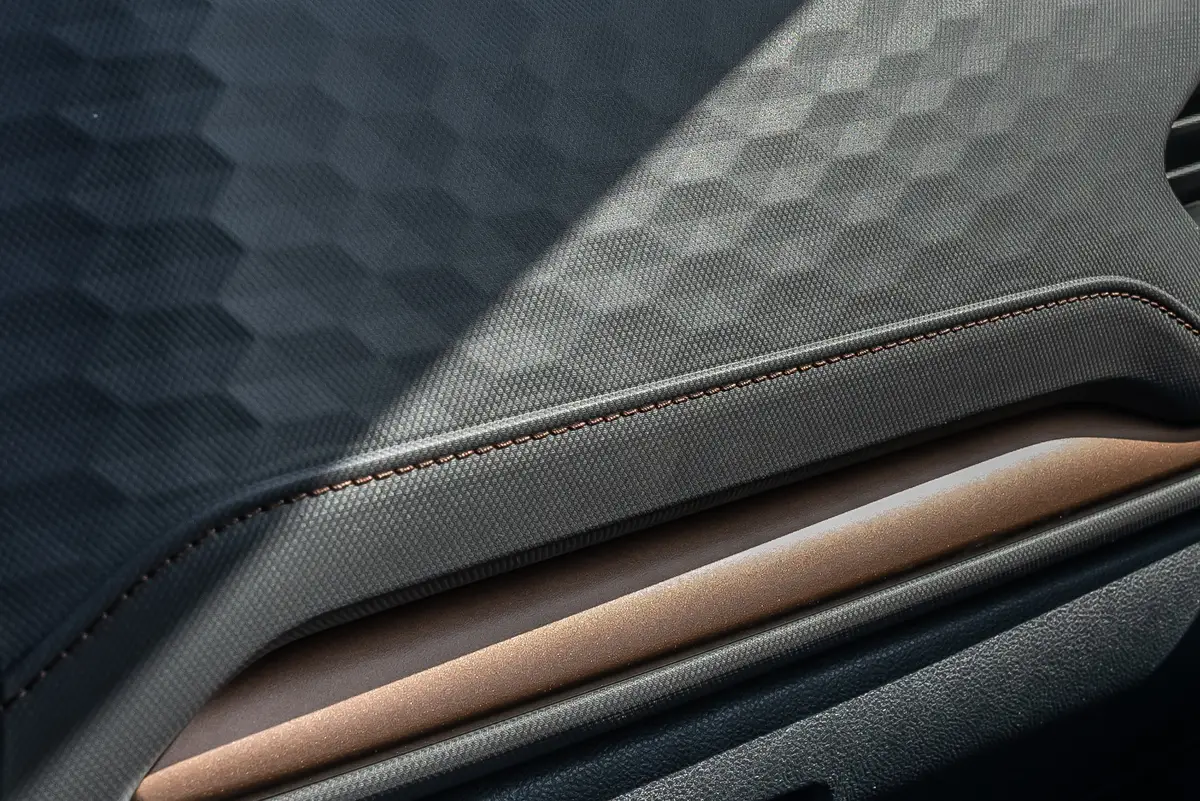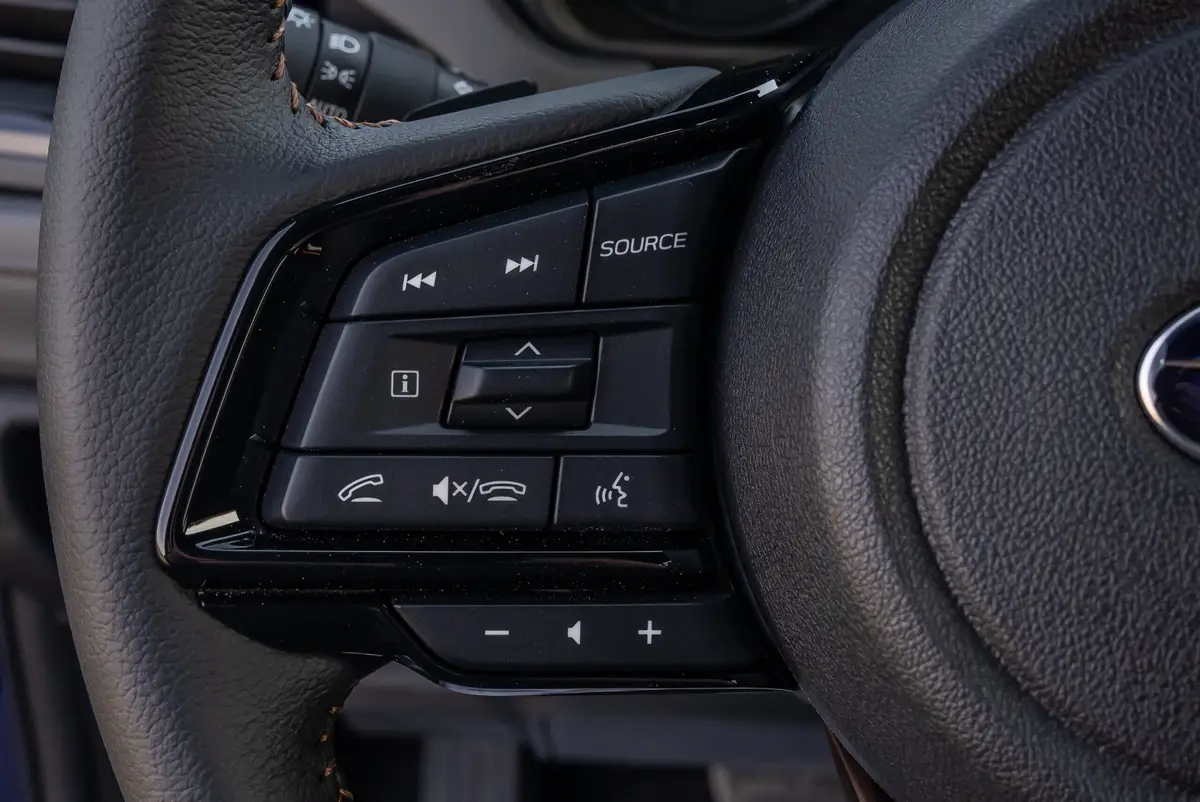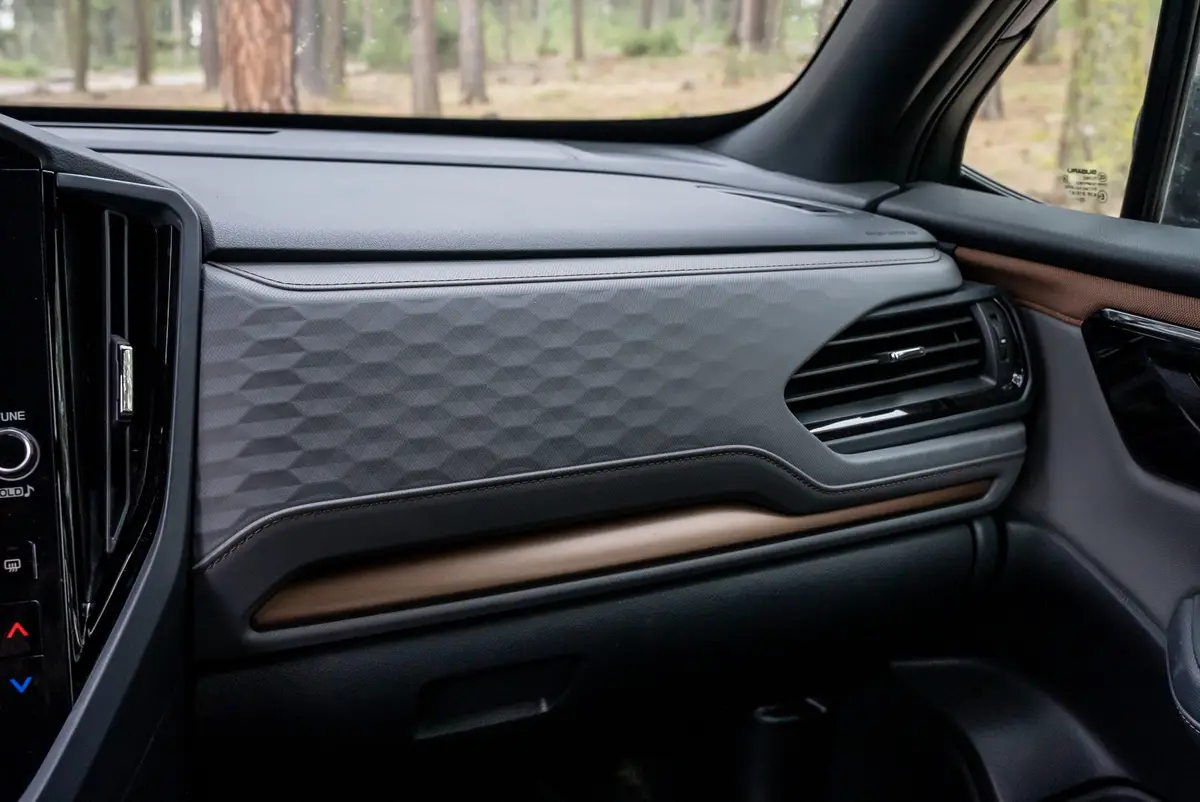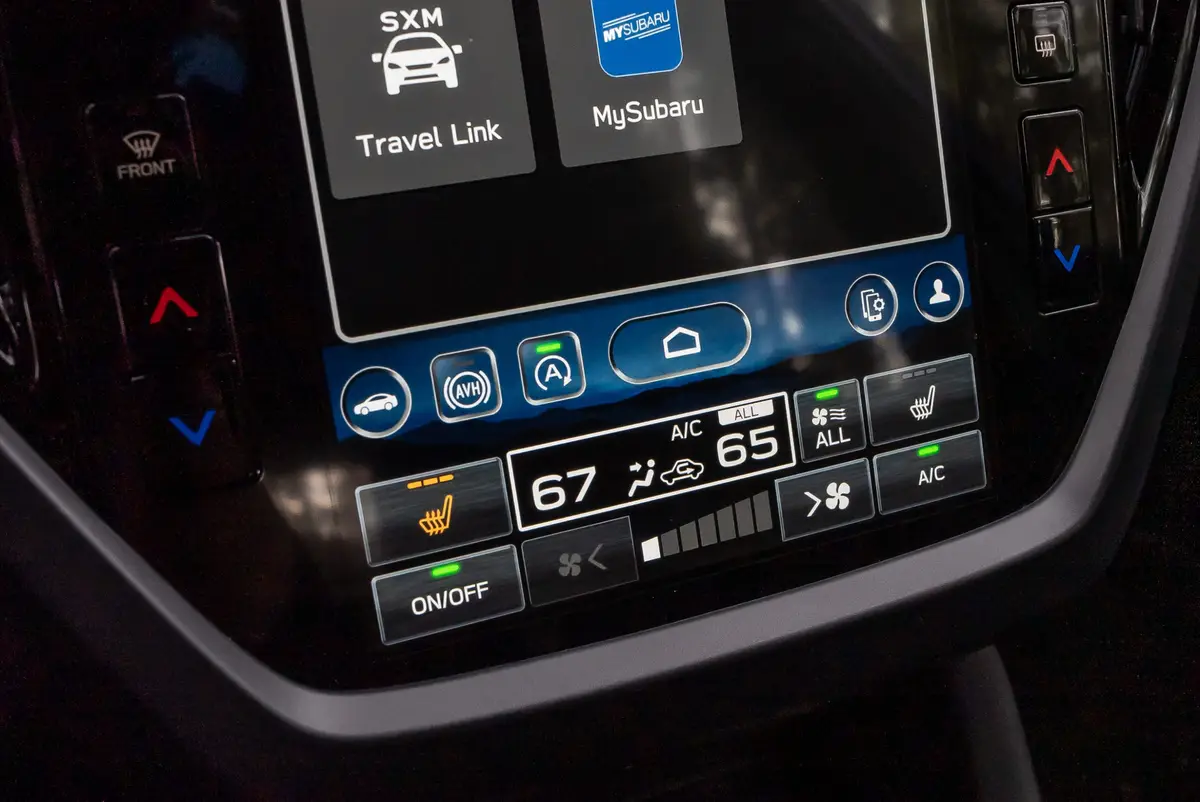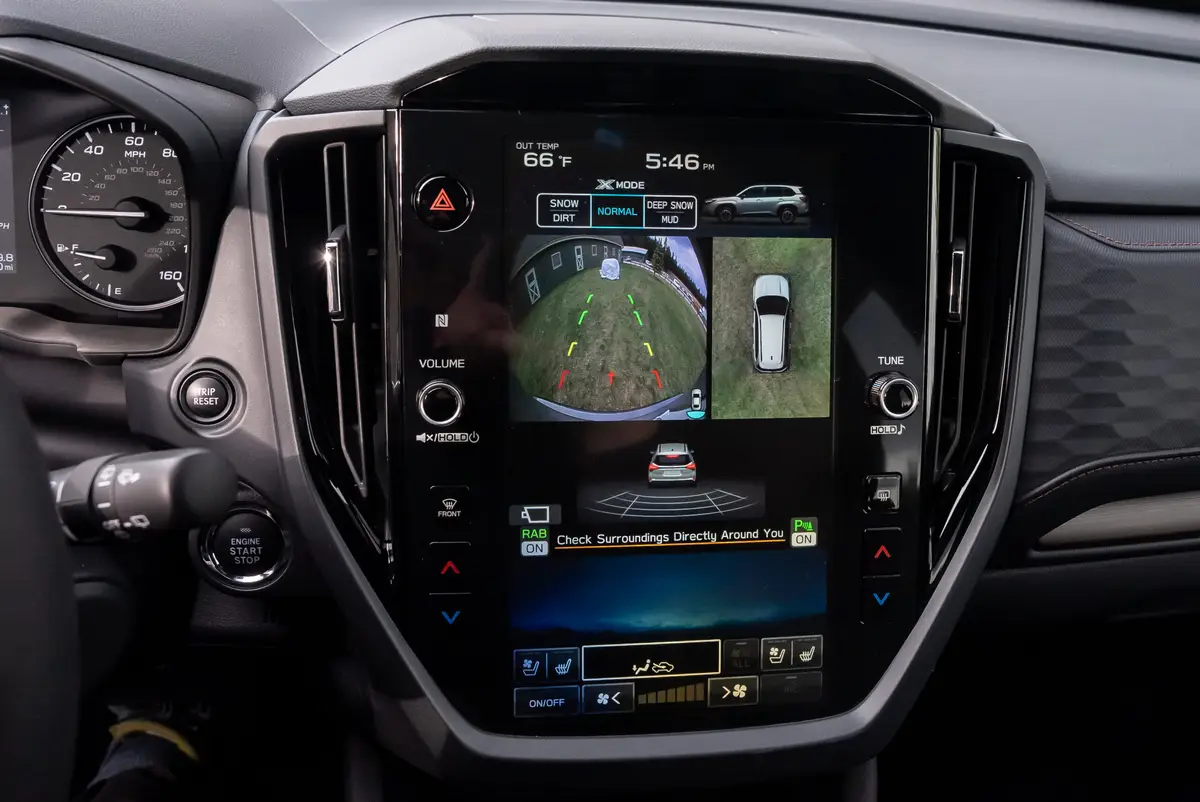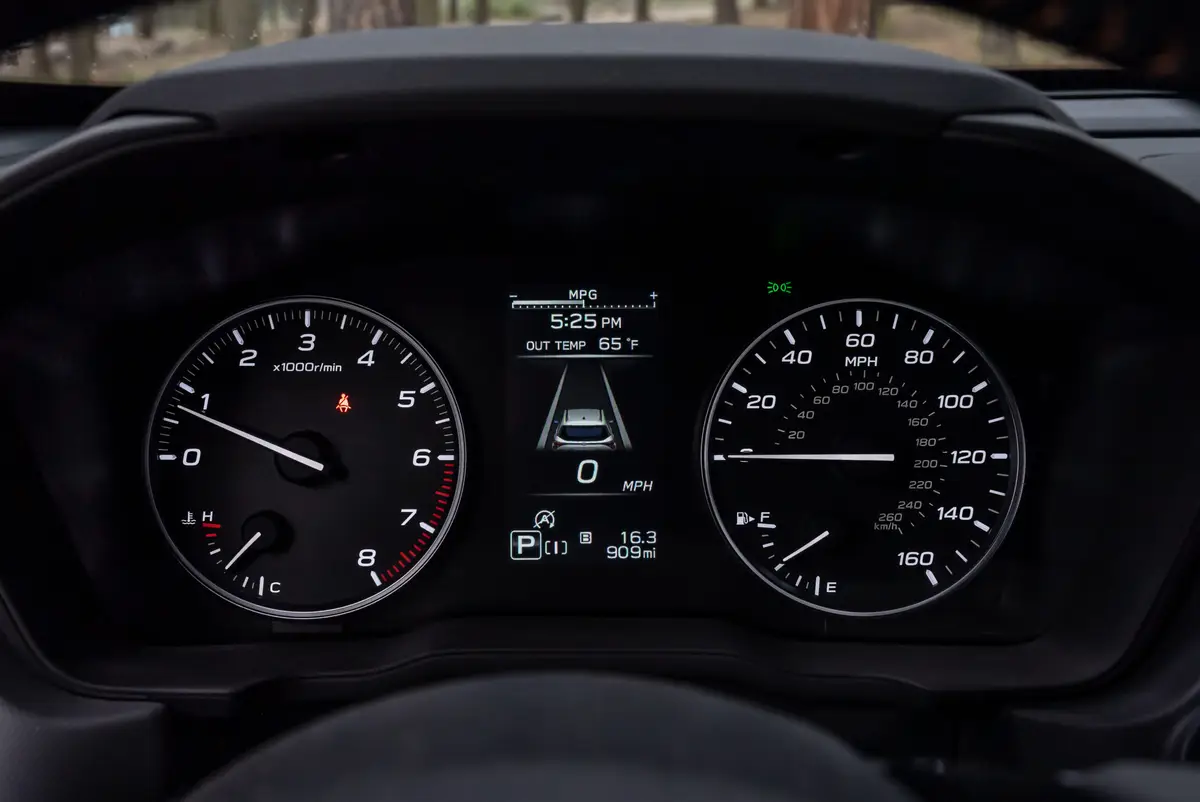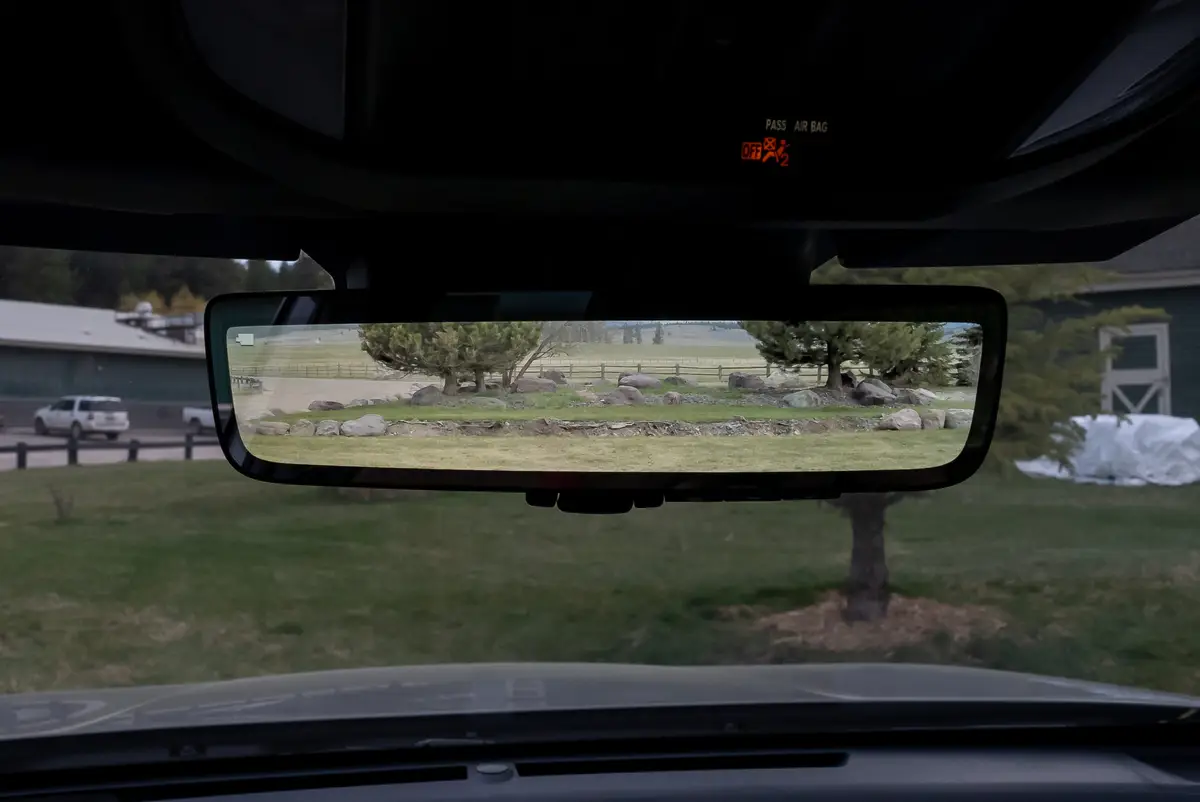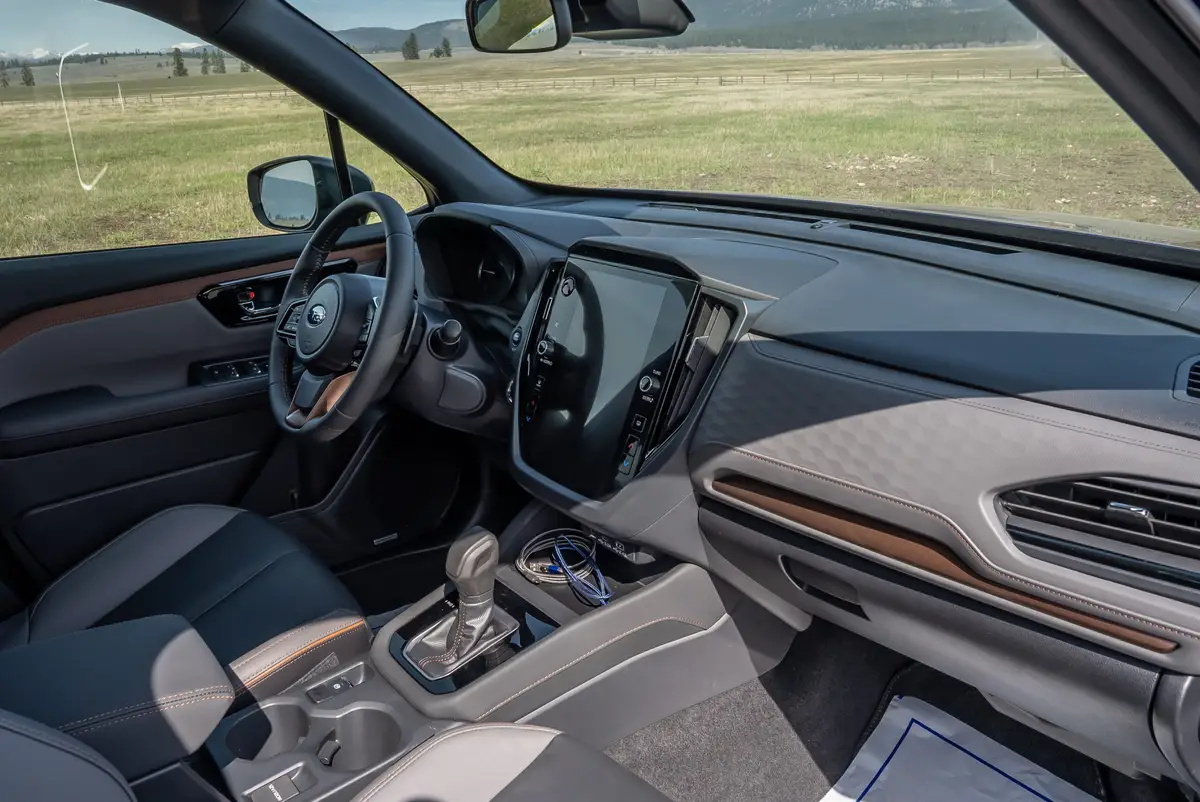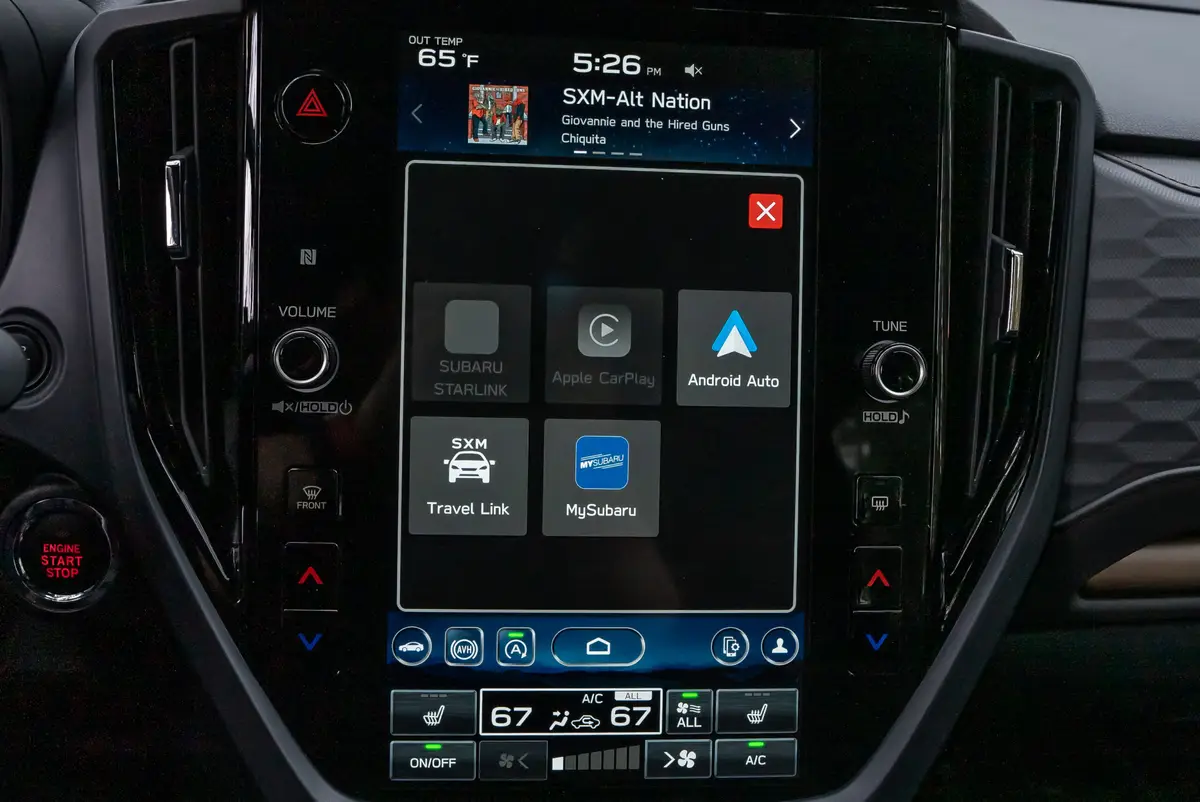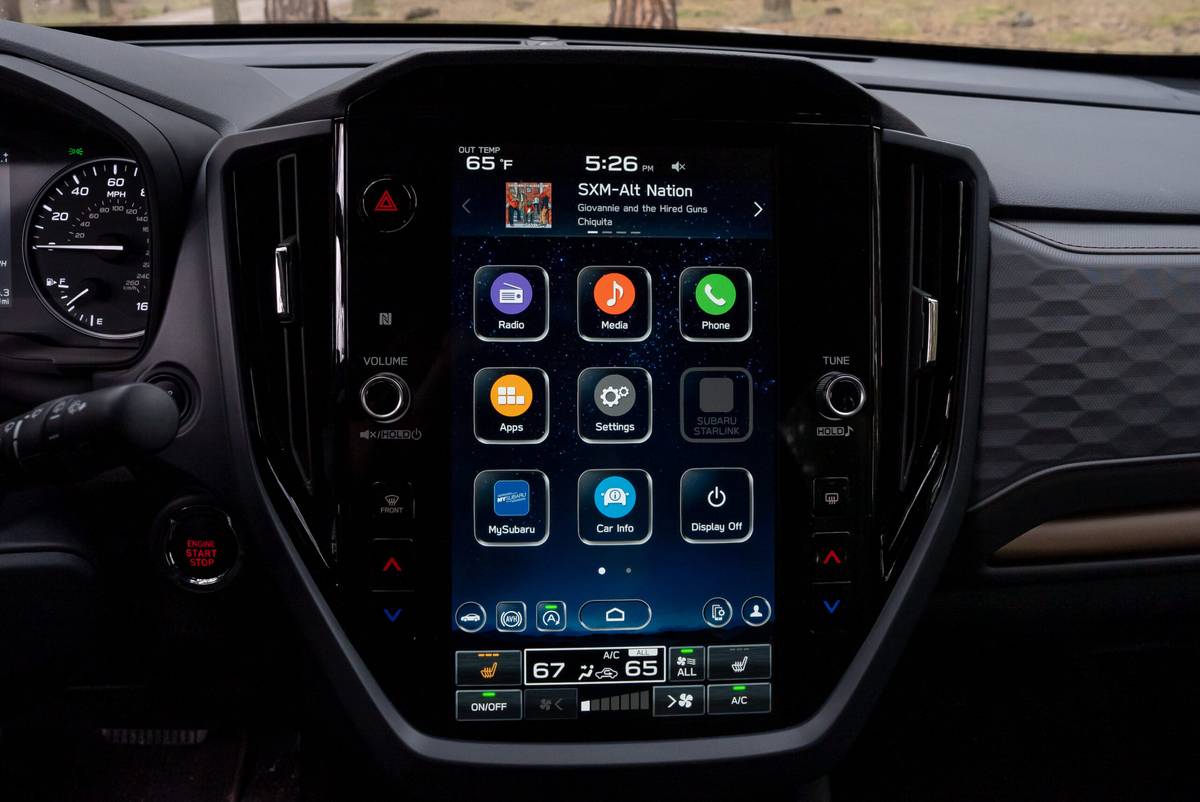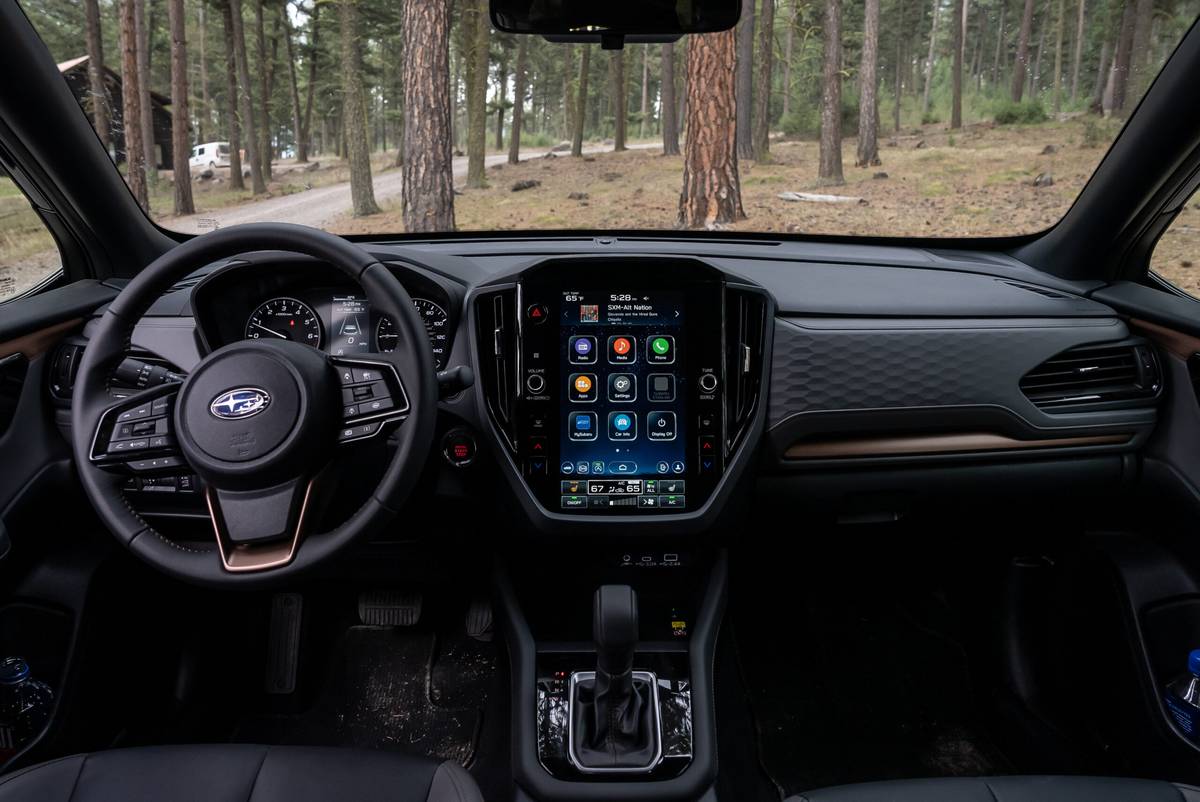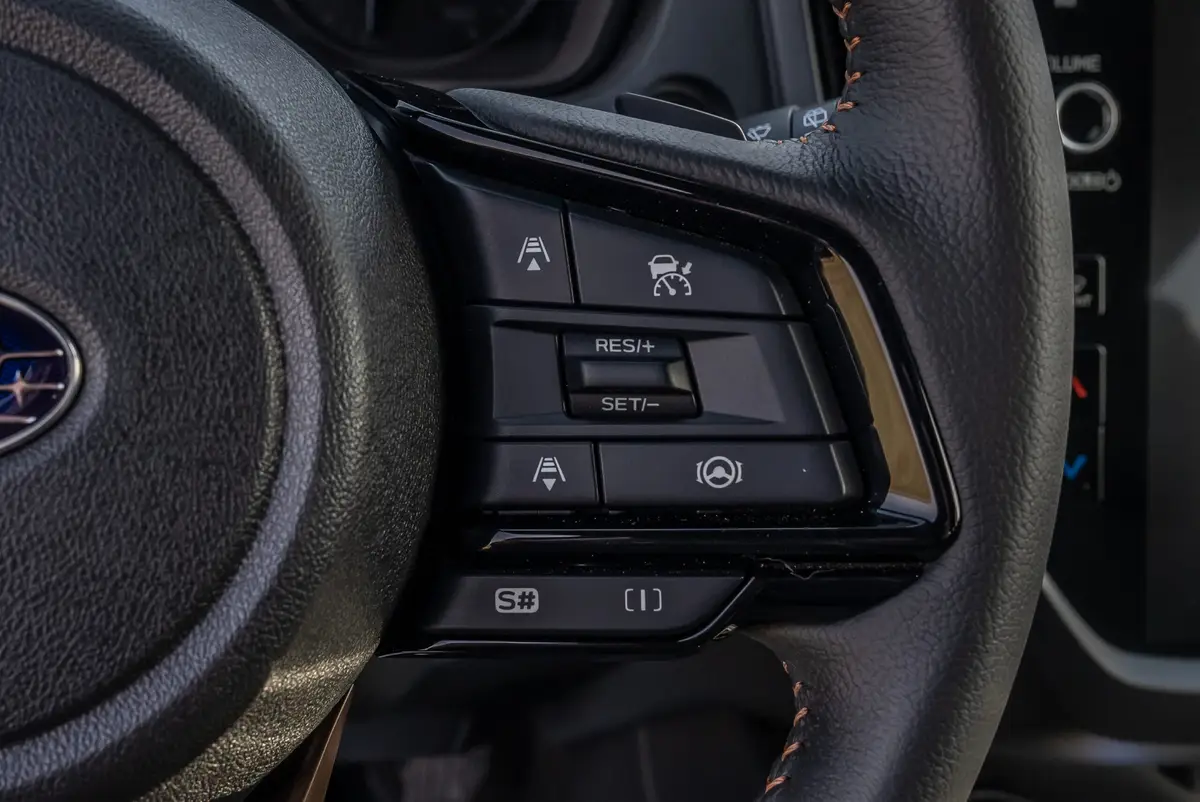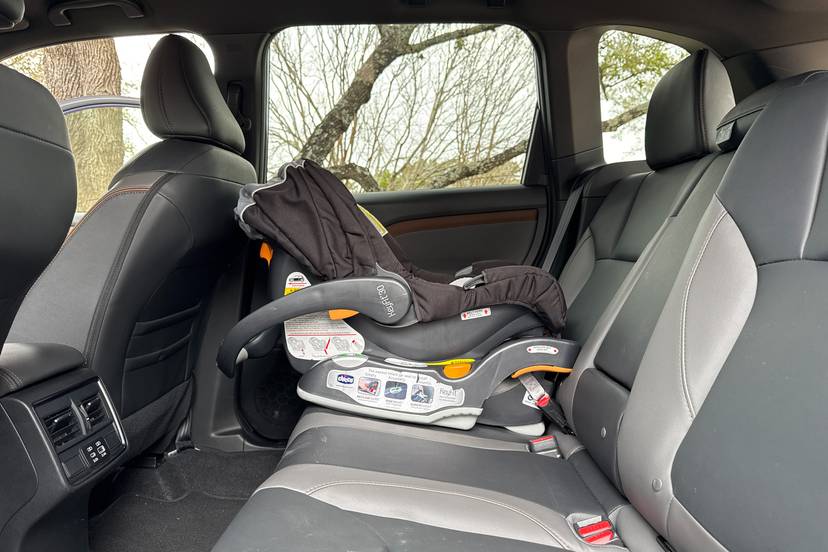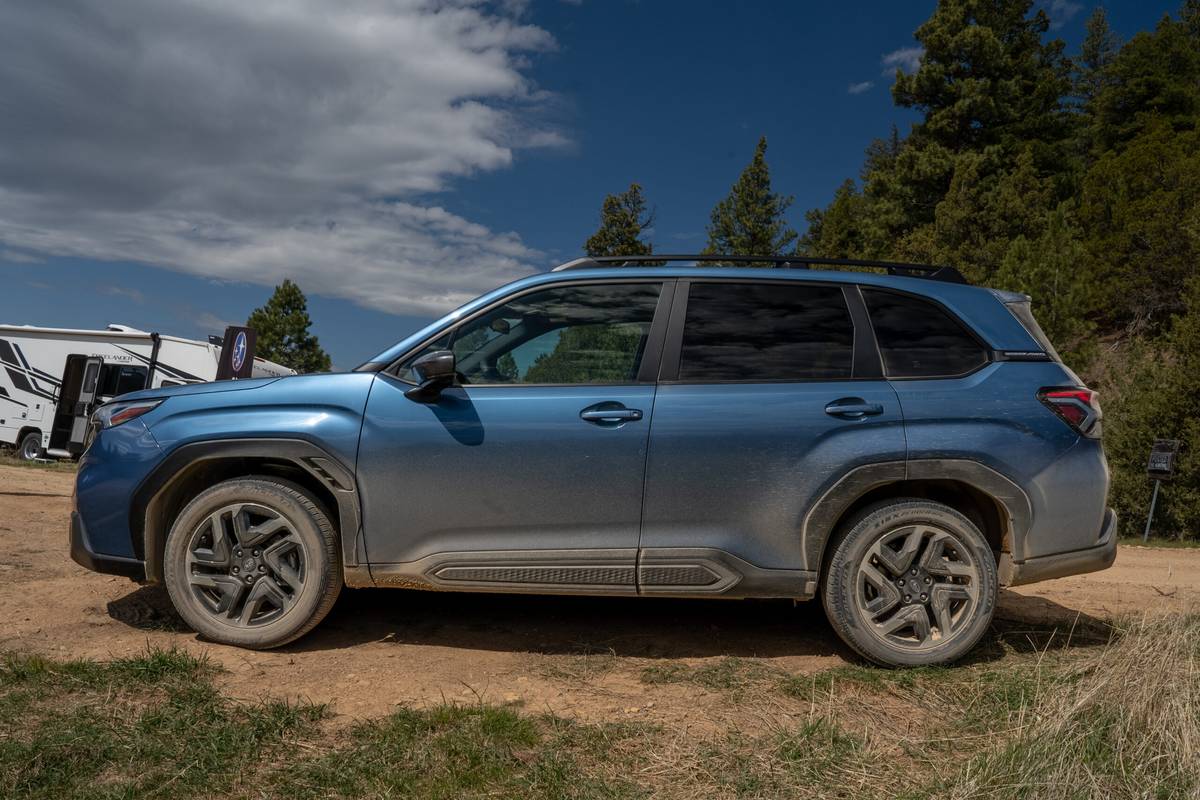
The verdict: The redesigned 2025 Subaru Forester sticks to its predecessor’s successful script as an adventure-ready compact SUV with standard all-wheel drive and better-than-average off-road capability while gaining new tech and convenience features and better all-around refinement.
Versus the competition: The Forester stands out in the crowded compact SUV class by virtue of its boxy, space-efficient profile and its great-outdoors-focused design philosophy. It stacks up well against the Ford Bronco Sport, Jeep Compass, and Toyota RAV4’s Adventure and TRD Off-Road trim levels.
Subaru’s plucky Forester compact SUV is perennially one of the brand’s bestselling vehicles, usually running neck and neck with the smaller Crosstrek and larger Outback in annual sales. The Forester has carved out an enviable position in a highly competitive class by offering excellent cabin space and rough-terrain capability in a sensibly sized package, topped off with Subaru’s signature outdoorsy image.
Related: 2025 Subaru Forester Up Close: No Big Changes, Just Better
Previously redesigned for the 2019 model year, the Forester gets another ground-up redo for 2025 to kick off the model’s sixth generation. The expected styling updates and new features are part of the redesign, as are notable improvements in quietness and refinement, but the Forester’s likable personality carries over intact. I drove the 2025 Forester at its press preview event in western Montana, where I sampled its improvements on both paved roads and rutted, steep and occasionally snowy gravel roads. (Per our ethics policy, Cars.com pays for its own airfare and lodging when attending such manufacturer-sponsored events.)
Related Video:
We cannot generate a video preview.
Staying the Course
In designing the 2025 Forester, Subaru wisely didn’t fix what wasn’t broken. The company’s research showed that Forester owners are more likely than the average consumer to own dogs or partake in gear-intensive activities like camping and hiking. These customers put a priority on off-road capability and safety, as well as cargo- and passenger-hauling versatility within a relatively tidy overall footprint, so Subaru made sure such virtues continued.
The dimensions of the new model change only fractionally from the previous generation, and the characteristic boxy profile stays mostly the same, but with crisper body lines all around. For a more detailed look at the 2025 Forester’s styling updates, check out our article where we took a look up close.
As before, the Forester lineup includes Base, Premium, Sport, Limited and Touring trims, but Subaru has added some trim-specific details for greater differentiation between them. The off-road-fortified Wilderness version doesn’t make the jump to the new-generation platform — at least not yet. Subaru is planning to introduce a new-generation Wilderness in the near future, but at least for the 2025 model year, the previous-generation Wilderness model carries over.
Excellent Cabin Space and Visibility
The Forester remains one of the most space-efficient, commodious vehicles in its class. The tall, upright roofline and large windows give the cabin an airy feel and provide excellent all-around visibility. The thin windshield pillars and front quarter windows make for especially good lines of sight to the front corners of the vehicle. Headroom and legroom are generous in the front seats and good for average-size adults in the backseat, although the housing for the available panoramic moonroof (which is standard on all but the base trim) intrudes a bit on headroom for extra-tall occupants.
By factory measurements, the Forester doesn’t have the most cargo room in its class, but it’s competitive nonetheless, and Subaru has given good attention to real-world use. The extra-wide rear liftgate opening, low cargo-floor height and minimal intrusion from the rear wheelhouses facilitate easy loading and unloading. In addition to the small hooks built into either side of the cargo area and the headliner just inside the liftgate opening, Subaru has included screw-in accessory mounting points on the cargo-area walls and the underside of the liftgate; these can mount extra hooks or other cargo-area accessories for additional versatility.
The optional power liftgate now comes with hands-free, kick-activated opening and closing — just the ticket when your hands are full with backpacks or your Alaskan Malamute (though I was a little surprised to realize the Forester didn’t already offer this feature). The rear doors open almost 90 degrees, which makes it easier to load cargo or get little ones in and out of car seats. A textured plastic surface at the base of the rear door openings provides a handy step for accessing roof-mounted cargo. Roof rails are now standard on all Foresters — the Sport and Touring have low-profile rails, the others raised rails.
Acceleration Still Meh … at Least for Now
The Forester’s 2.5-liter horizontally opposed four-cylinder engine receives several updates that are aimed at improving efficiency, emissions, noise levels and the like, but a horsepower infusion isn’t among the upgrades. In fact, the horsepower rating drops slightly, from 182 to 180 hp, but torque output rises from 176 to 178 pounds-feet, and the torque peak arrives at 3,700 rpm instead of 4,400 rpm. So, while it might feel a bit peppier in around-town driving than the previous generation, the Forester’s acceleration remains middling at best. Summoning adequate passing or merging power requires pushing the gas pedal to the floor, and even then, the Forester feels quite sluggish — especially when climbing a steep mountain road. Our test drive occurred at elevations approaching 6,000 feet in some places, and the thinner air here negatively affects engine performance, especially a naturally aspirated engine like the Forester’s.
A hybrid version of the new Forester is expected to launch soon, likely as a 2026 model, but Subaru has been tight-lipped on the new powertrain’s specs. We’re hopeful the planned Forester Hybrid will deliver a bump in horsepower (200-210 hp would be sufficient, thanks) as well as improved fuel economy.
Speaking of fuel economy, though we haven’t had a chance to do our own real-world testing yet, the 2025 Forester’s EPA ratings of 26/33/29 mpg city/highway/combined (25/32/28 mpg for Sport and Touring trims) are class-competitive, if a mile or two per gallon behind comparable class leaders. It’s worth noting, though, that the Forester’s fuel-tank capacity is 16.6 gallons — a gallon or two more than some class rivals — which makes for a driving range comfortably more than 400 miles, or better than 500 miles in optimal highway driving conditions.
Pleasant Handling, Cushy Ride Quality
Subaru says the new Forester’s structure benefits from three times more structural adhesive, among other improvements, and it’s 10% more torsionally rigid than the outgoing model. I drove the Forester over some seriously rutted gravel roads, including mountain trails that were covered in a few inches of snow, and the suspension was respectably absorbent and composed over all of it.
The steering feel is notably refined, especially when passing over sharp bumps and ruts — a dual-pinion steering gear adapted from the WRX compact performance sedan reduces kickback through the steering wheel. We split our driving time between a Sport and a Limited; Subaru says the Sport has a uniquely tuned suspension for a sportier on-road feel, but I couldn’t discern much of a difference from behind the wheel.
The Forester’s boxy shape means wind rush is fairly noticeable in highway driving, along with some tire roar. Quietness is notably improved overall, however, thanks in part to added sound-deadening material. The Forester’s engine has a rather hoarse sound, but the noise is well muffled inside the cabin; it intrudes only slightly during hard acceleration.
More From Cars.com:
- Redesigned 2025 Subaru Forester Stays the Course, Gets Enhanced Tech Features
- 2025 Subaru Forester: Bolder Exterior Styling, New Tech, Priced From $31,090
- 2023 Mazda CX-50 Vs. 2022 Subaru Forester Wilderness: Who Off-Roads Better?
- Research the 2025 Subaru Forester
- Shop for a New Subaru Forester
Classy Cabin Trimmings, New Tech and Safety Features
In addition to the improved quietness, the Forester’s cabin materials are nicely upgraded, with an upscale look and feel (at least in the Sport, Limited and Touring variants) and good fit and finish. Among the new features are a 360-degree camera system and a rearview camera mirror (for an unobstructed rear view when passengers or cargo block the traditional mirror), but both of these features are restricted to the top Touring trim.
A new-to-the-Forester infotainment system with a portrait-style 11.6-inch touchscreen is standard on all but the Base trim. We’ve used this same basic system in the redesigned-for-2024 Crosstrek and Impreza, and while it’s a net improvement over the previous layout, it’s not without its quirks. Most of the climate controls are absorbed into the bottom of the touchscreen (we find physical buttons and knobs easier to use when driving), and some of our editors have had problems connecting their phones via the wireless Apple CarPlay and Android Auto connectivity (another newly available feature for 2025, along with a wireless charging pad). Though I had no problems viewing the screen with my transitional-tint prescription glasses, some editors had issues seeing the infotainment screen clearly when wearing polarized sunglasses.
New safety features include standard Emergency Stop Assist, which can automatically bring the vehicle to a stop, activate the hazard lights and unlock the doors if the driver becomes unresponsive to warnings while using adaptive cruise control. Subaru says the Forester’s standard EyeSight driver-assist technology has been improved via a third camera for a wider field of view, along with updated control software and the addition of an electric brake booster.
Pricing and On-Sale Date
The Forester is competitively priced across the line, starting at $31,090 in Base form and running to $41,390 for the fully equipped Touring (prices include $1,395 destination). Whether you’re an outdoorsy type or, heck, even a couch potato, the 2025 Forester offers lots to like. It’s slated to begin arriving at dealerships in mid-May.
Editor’s note: This story was updated Dec. 17, 2024, to reflect the 2024 Forester Wilderness carries over for 2025 on the previous-generation platform.
Cars.com’s Editorial department is your source for automotive news and reviews. In line with Cars.com’s long-standing ethics policy, editors and reviewers don’t accept gifts or free trips from automakers. The Editorial department is independent of Cars.com’s advertising, sales and sponsored content departments.











